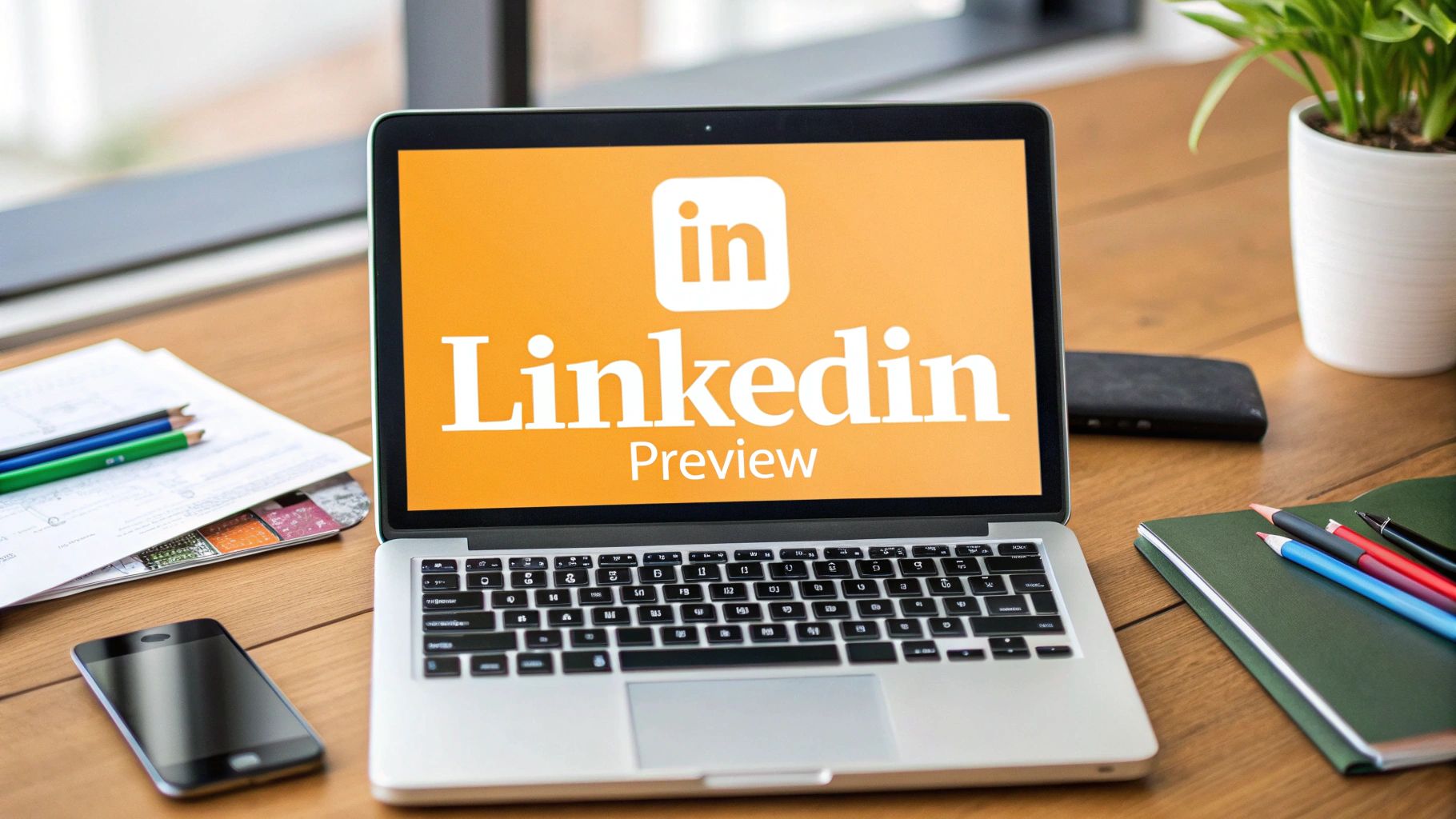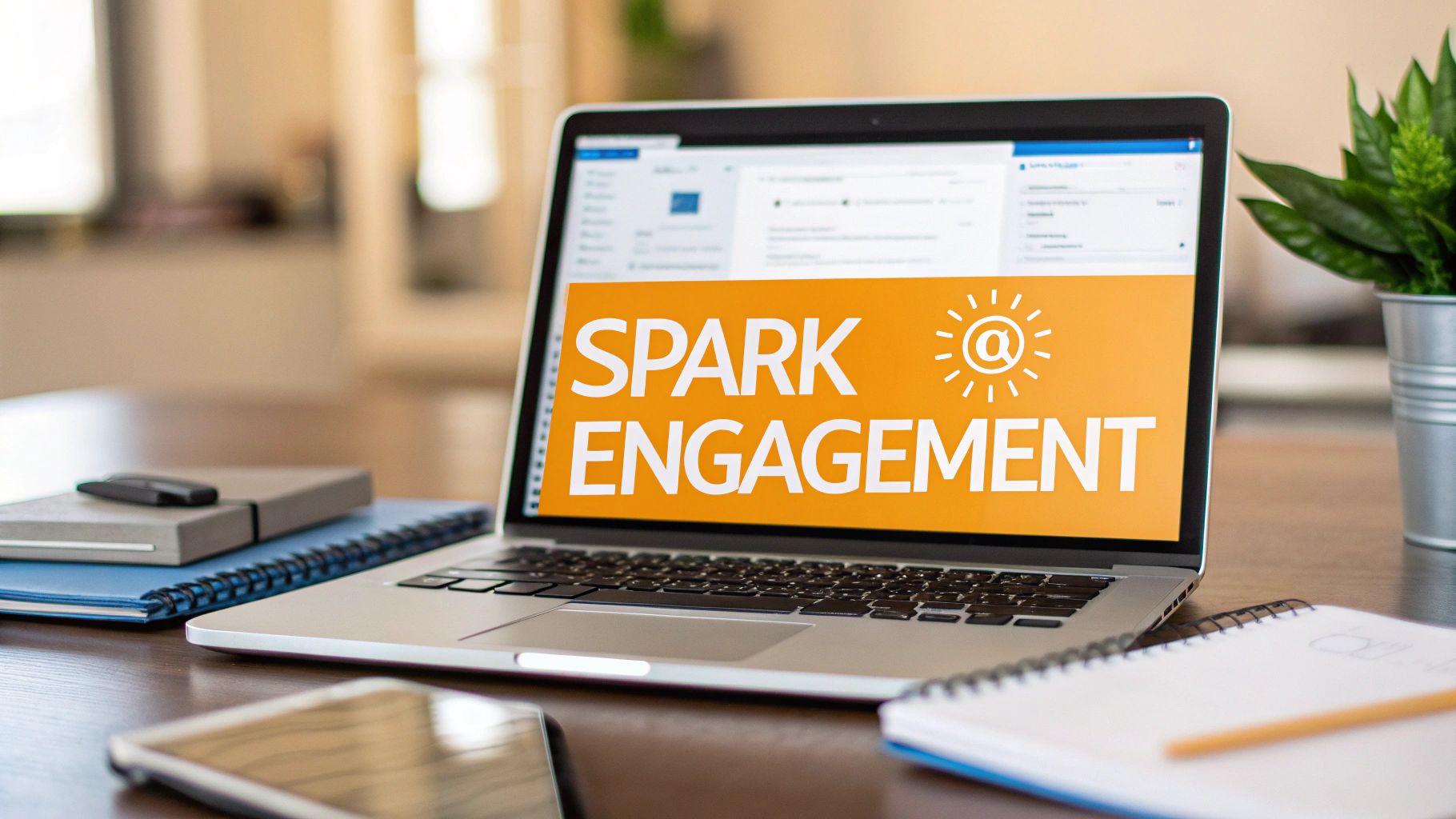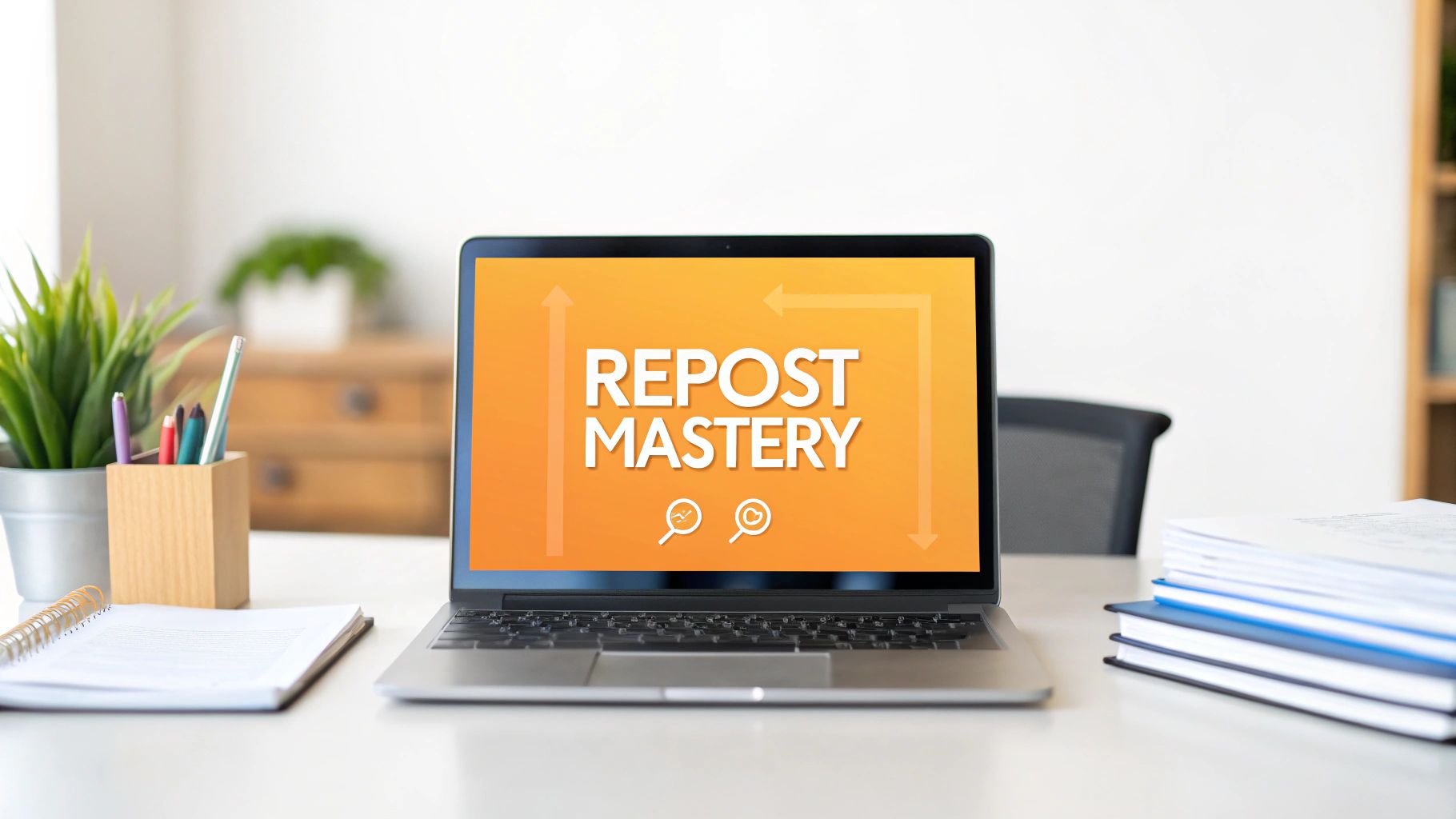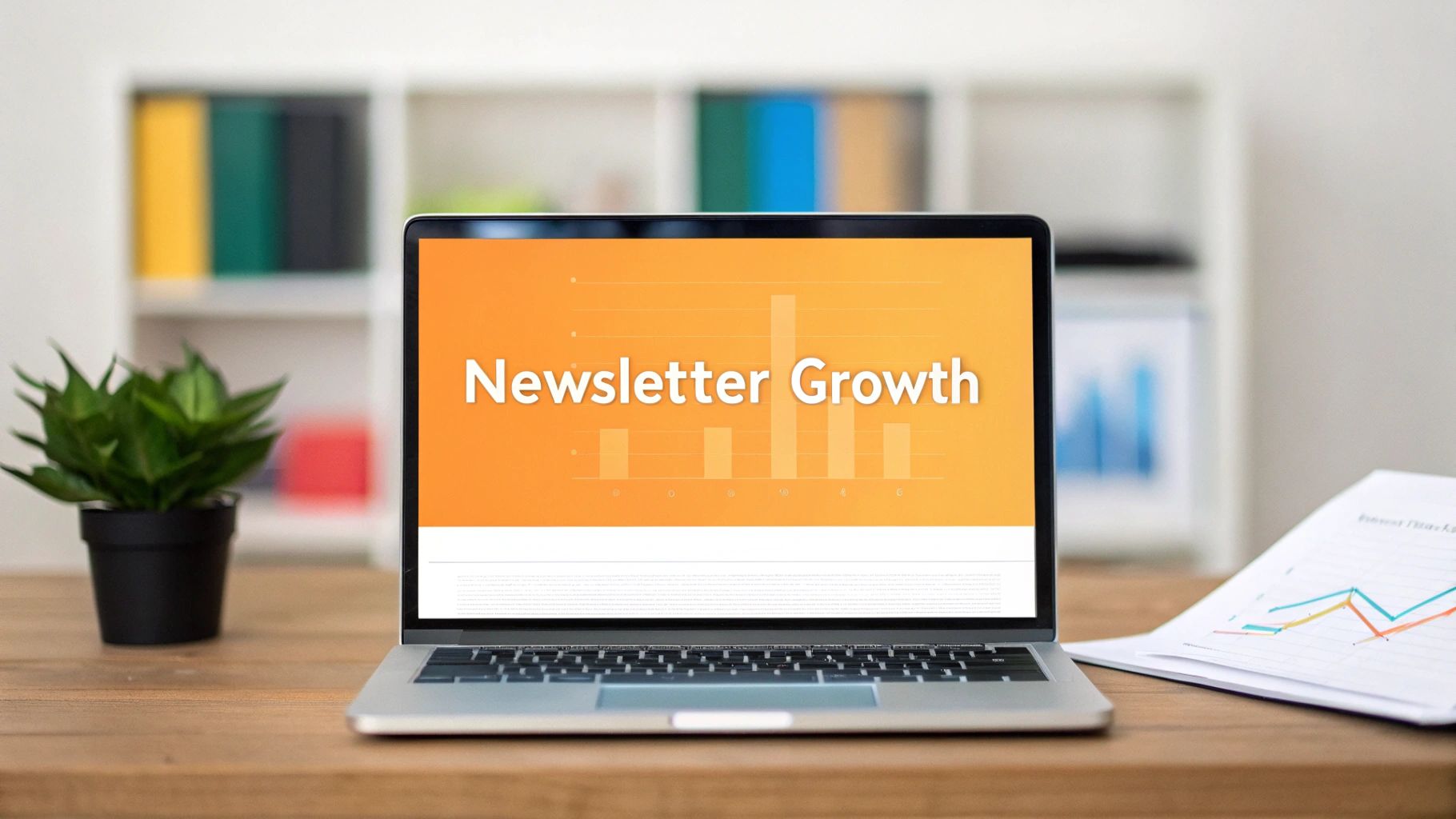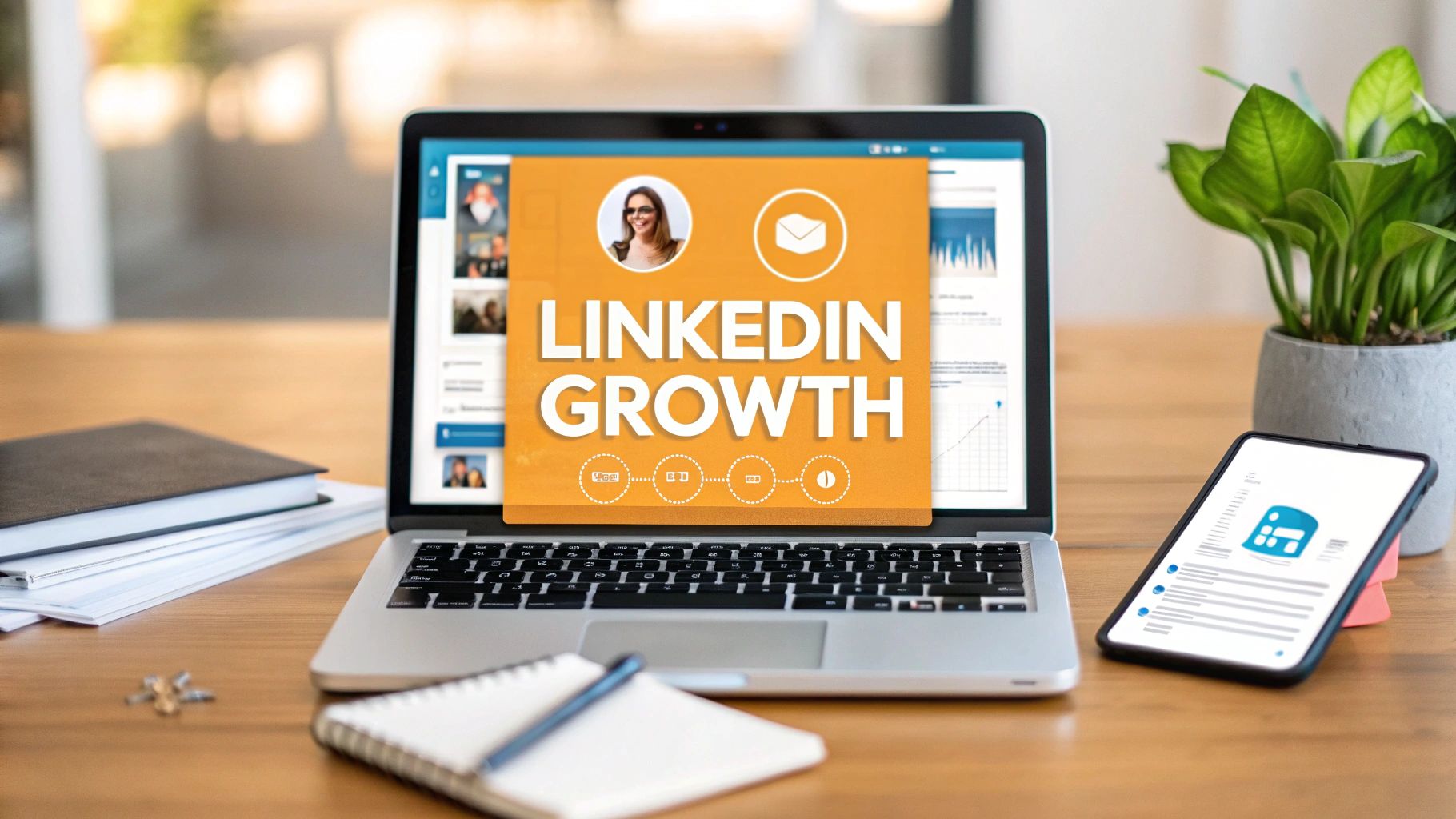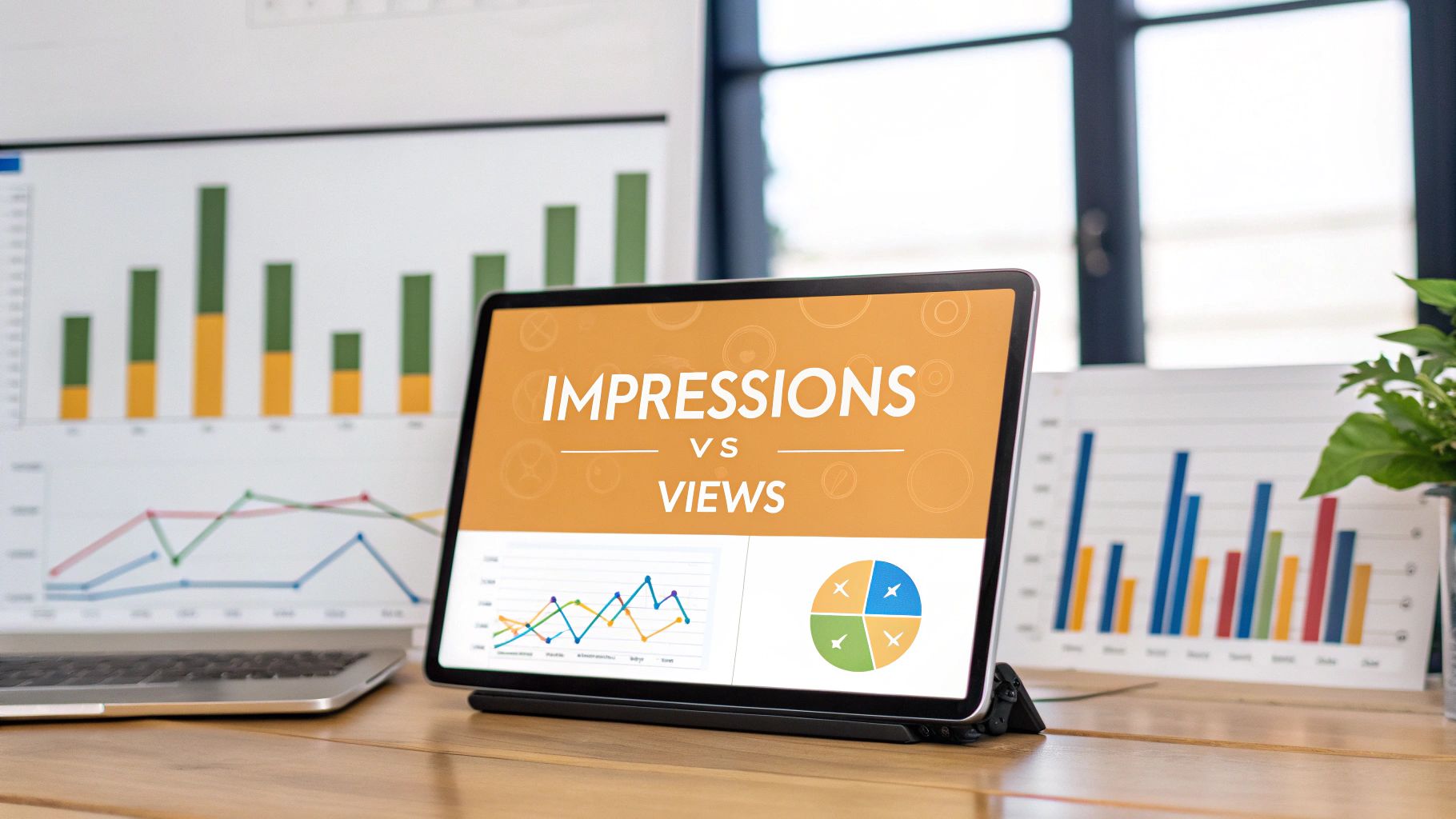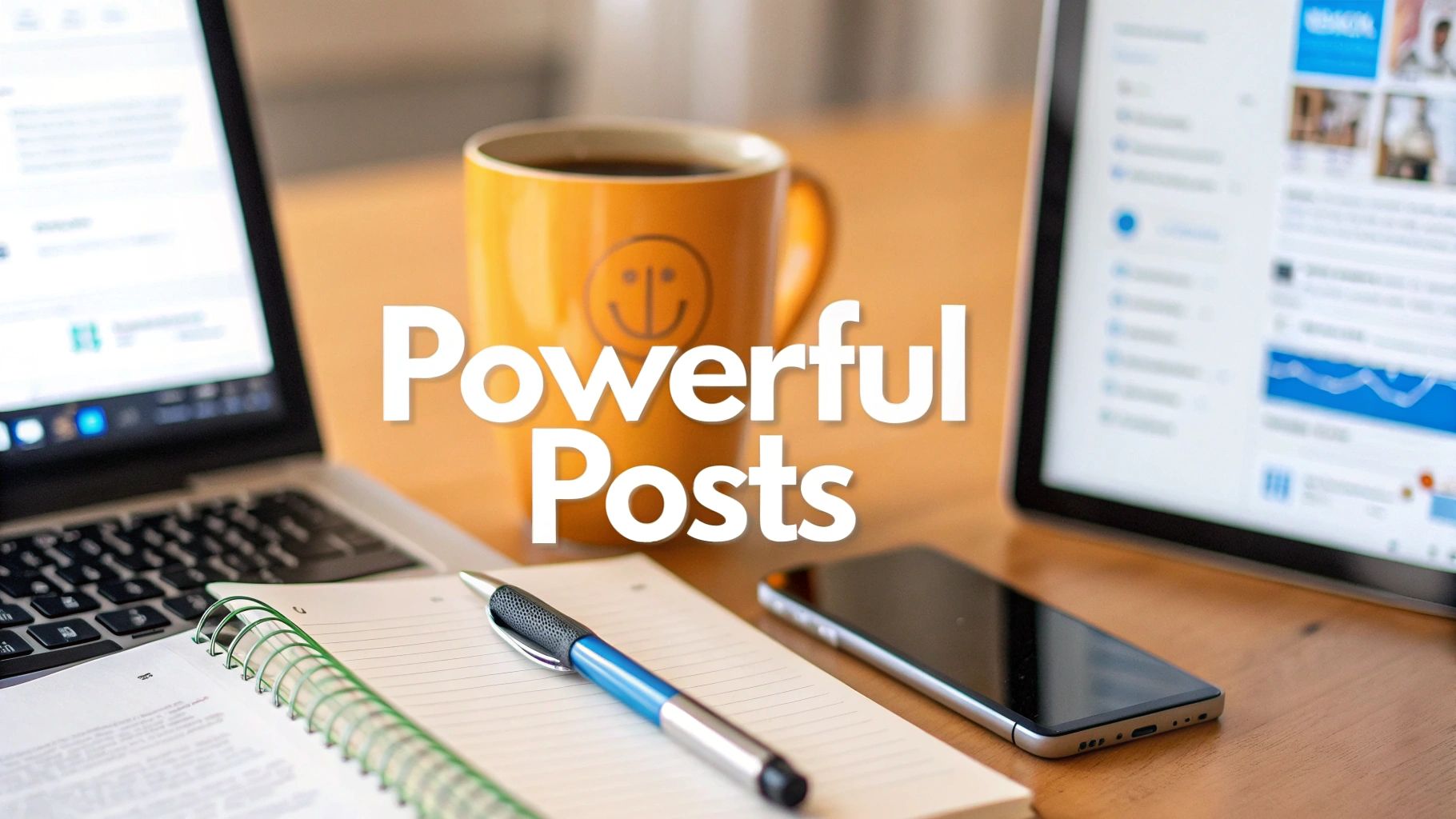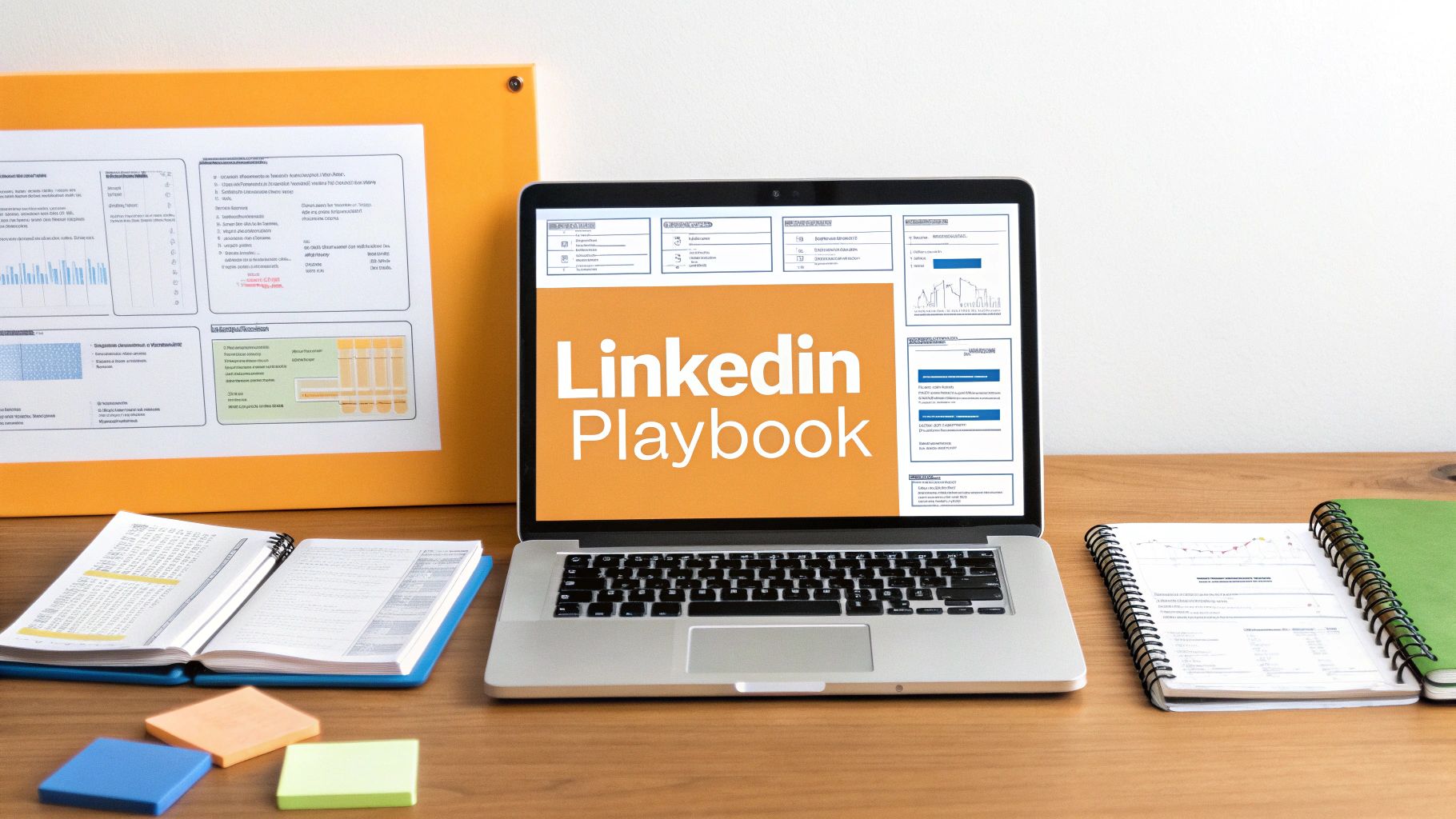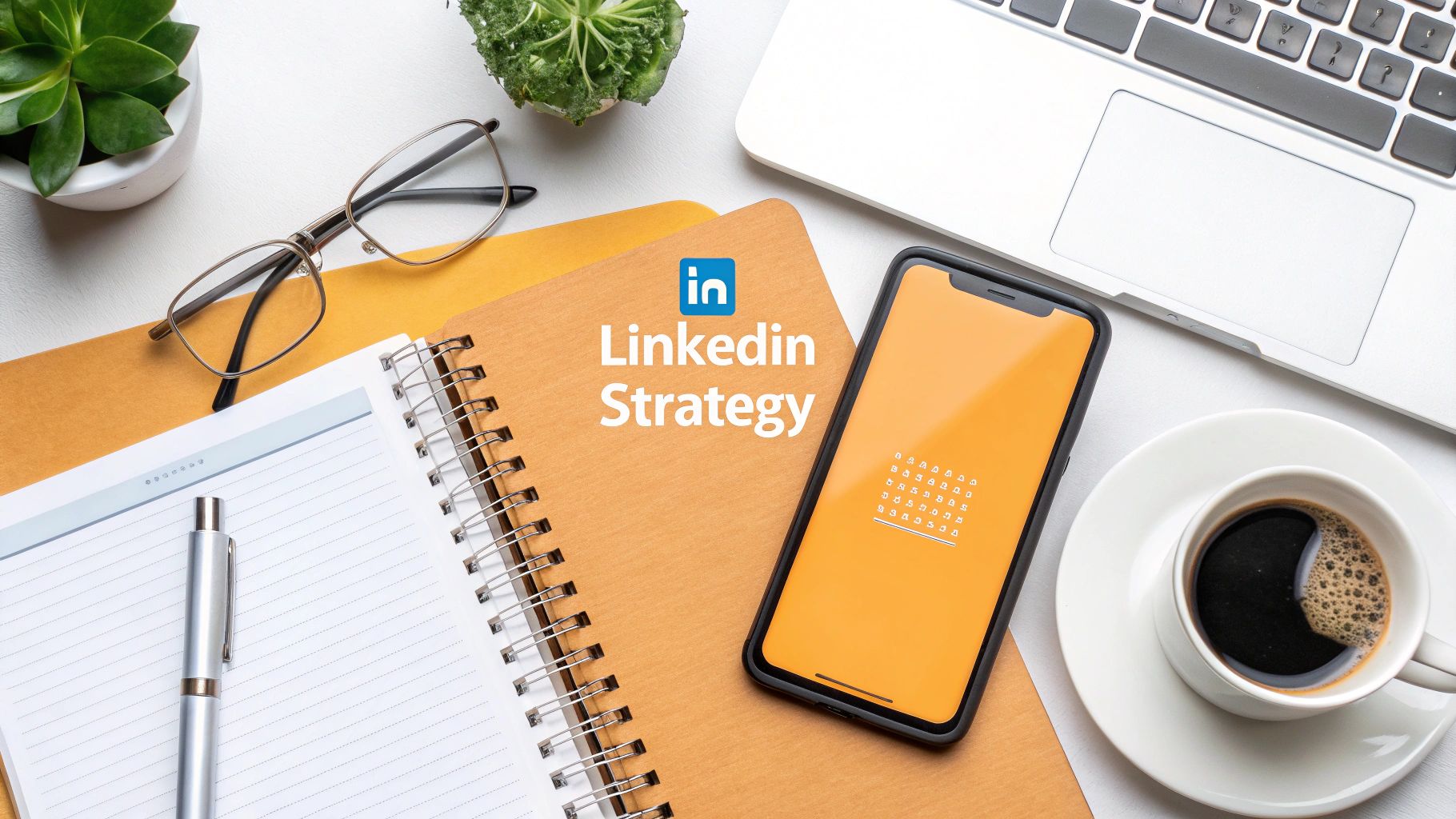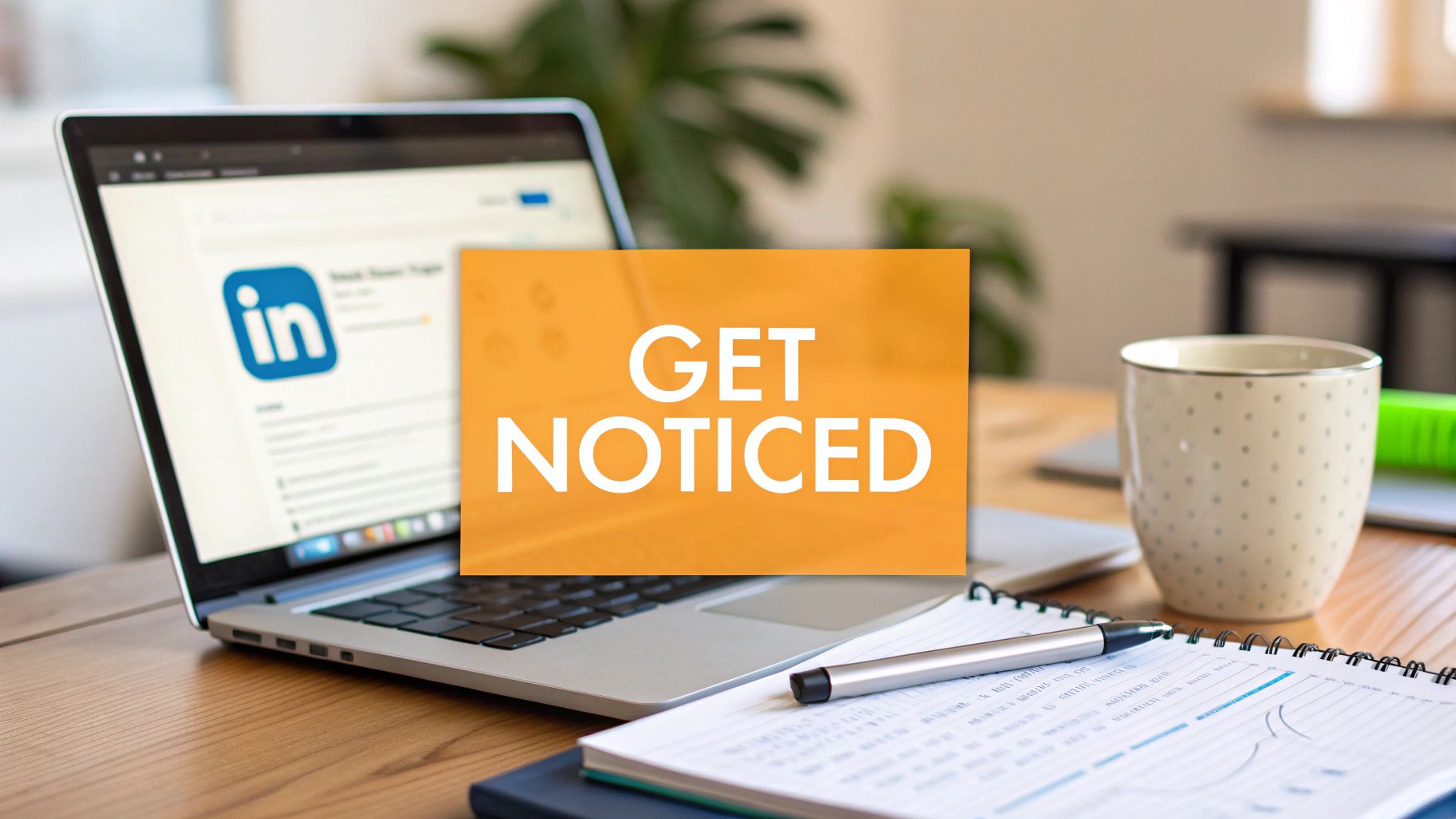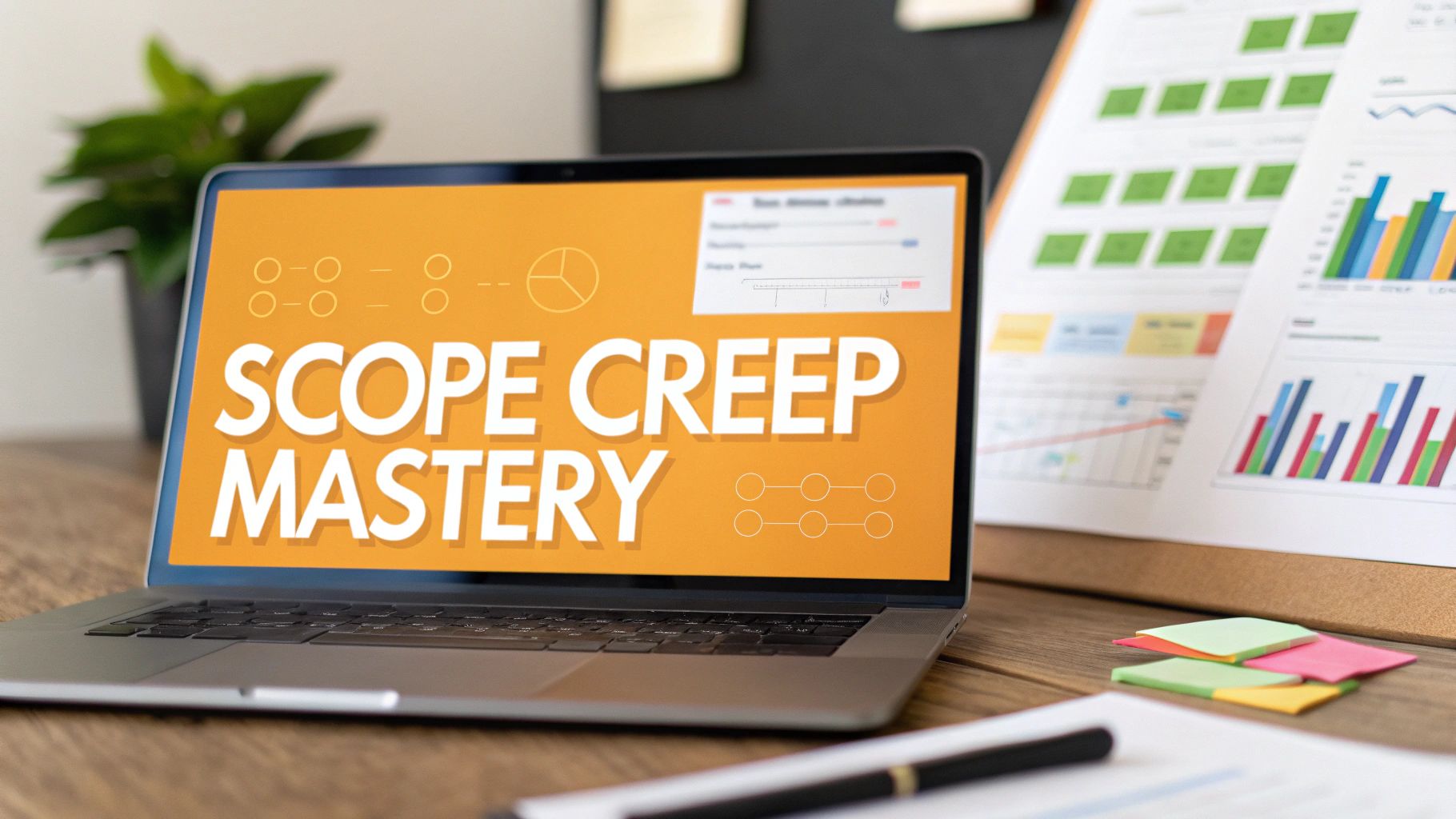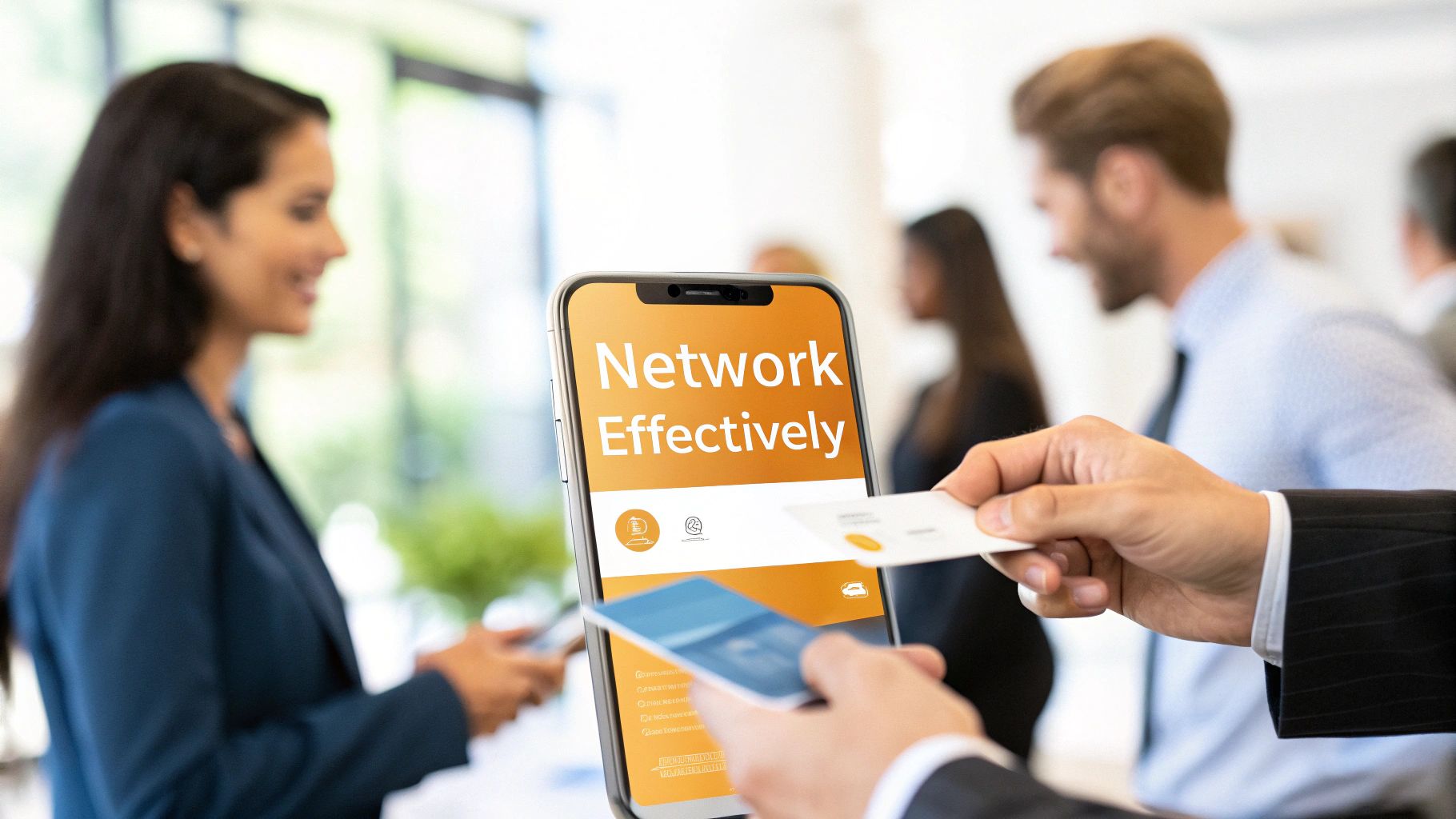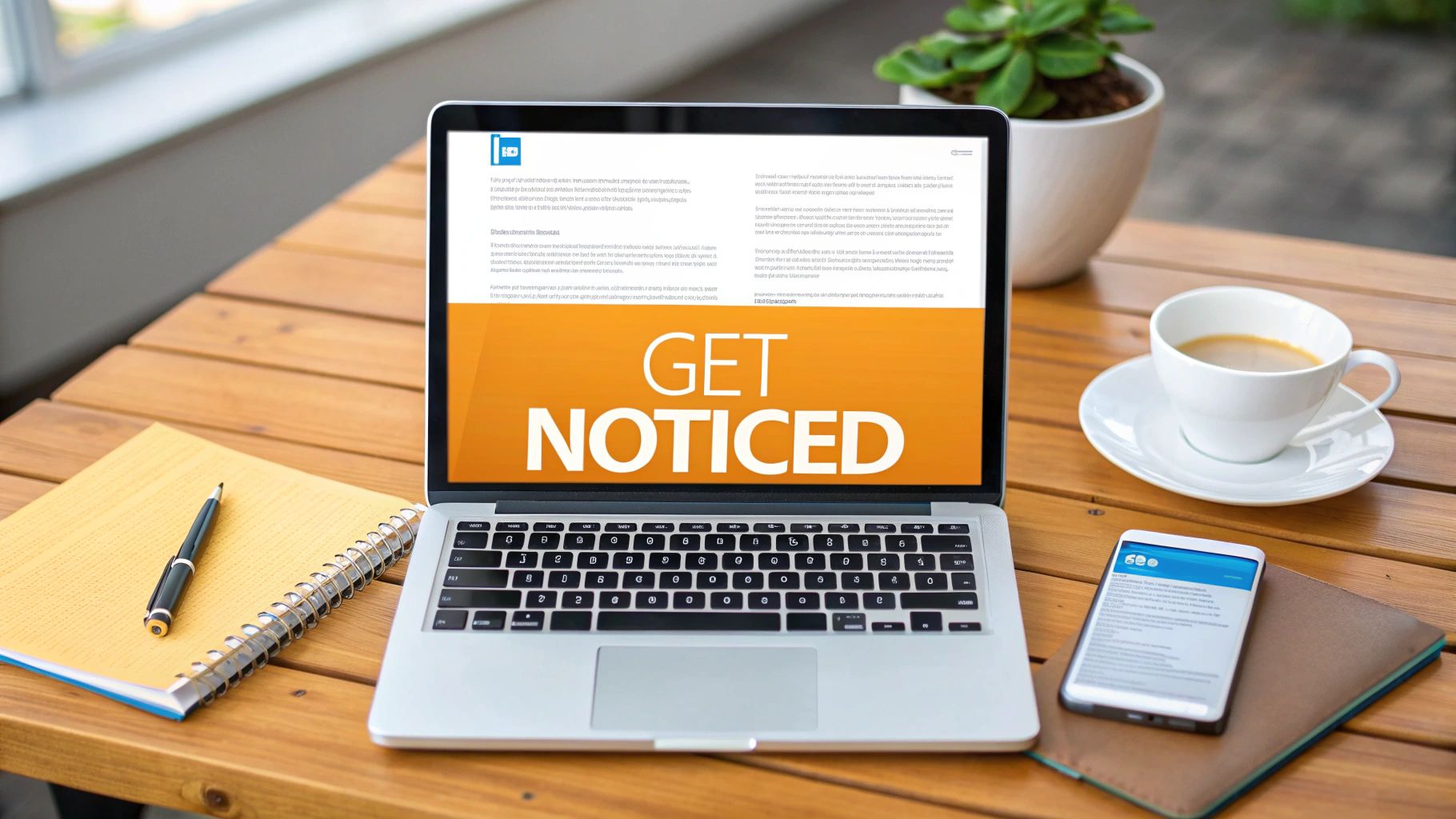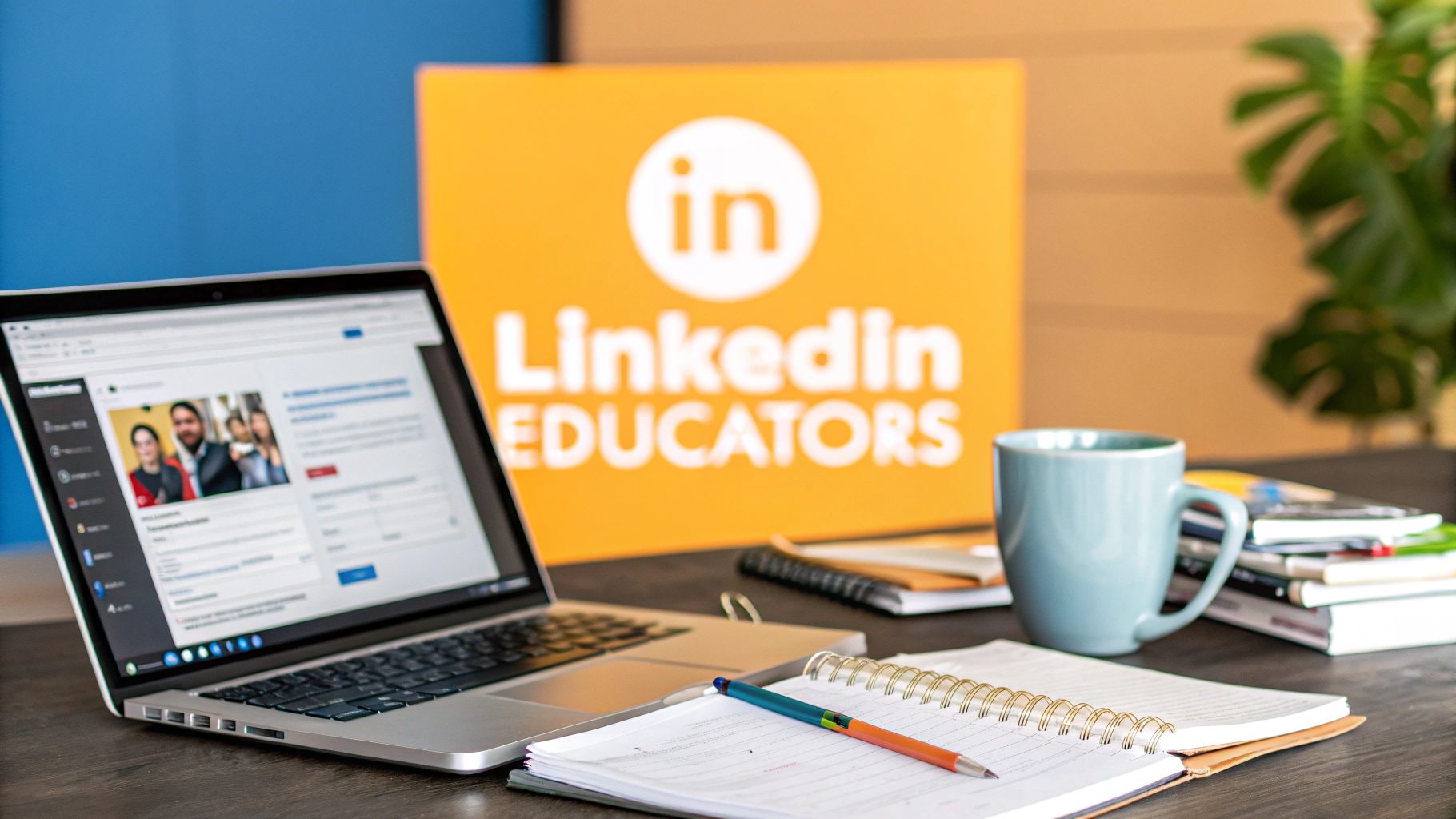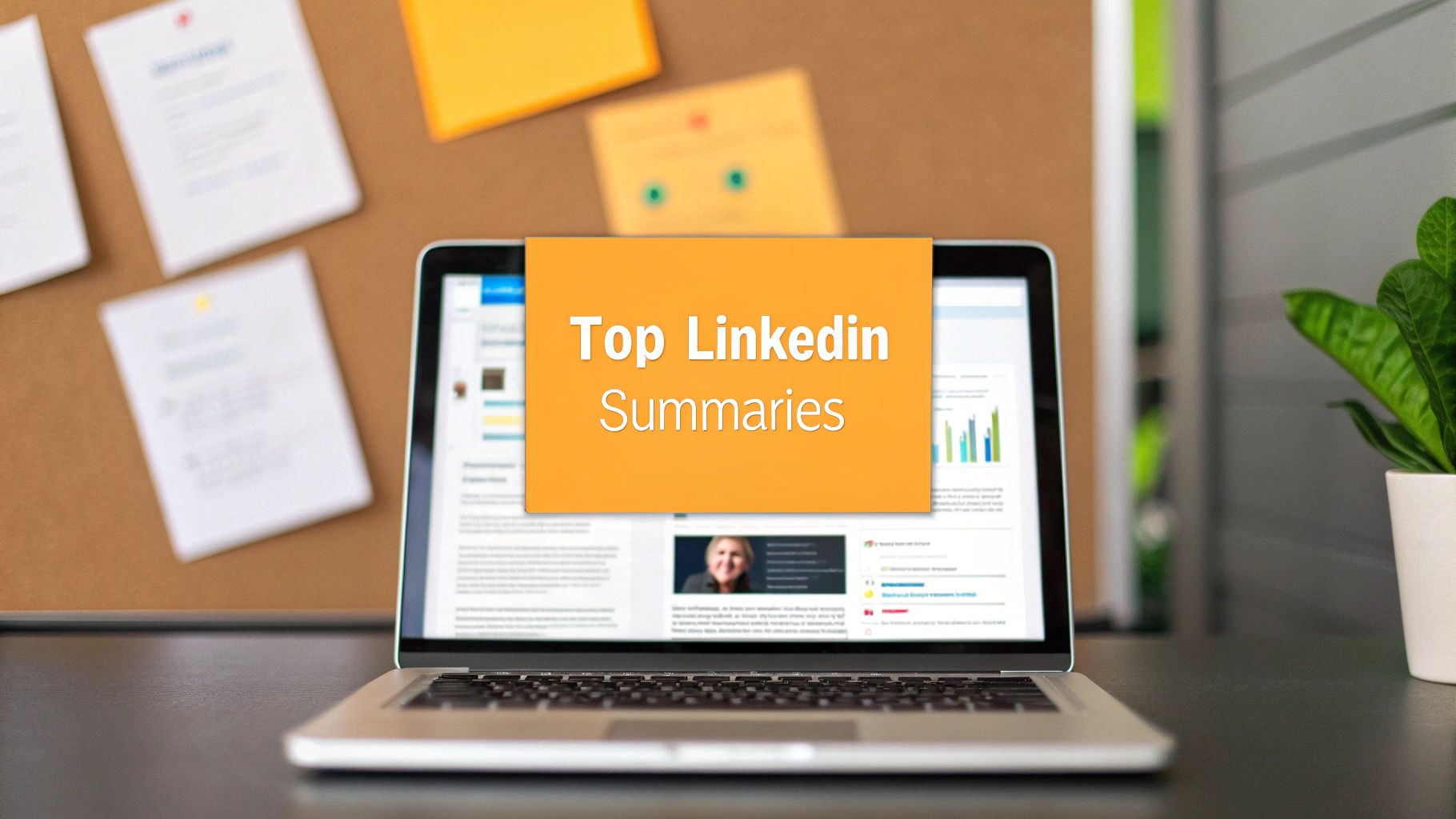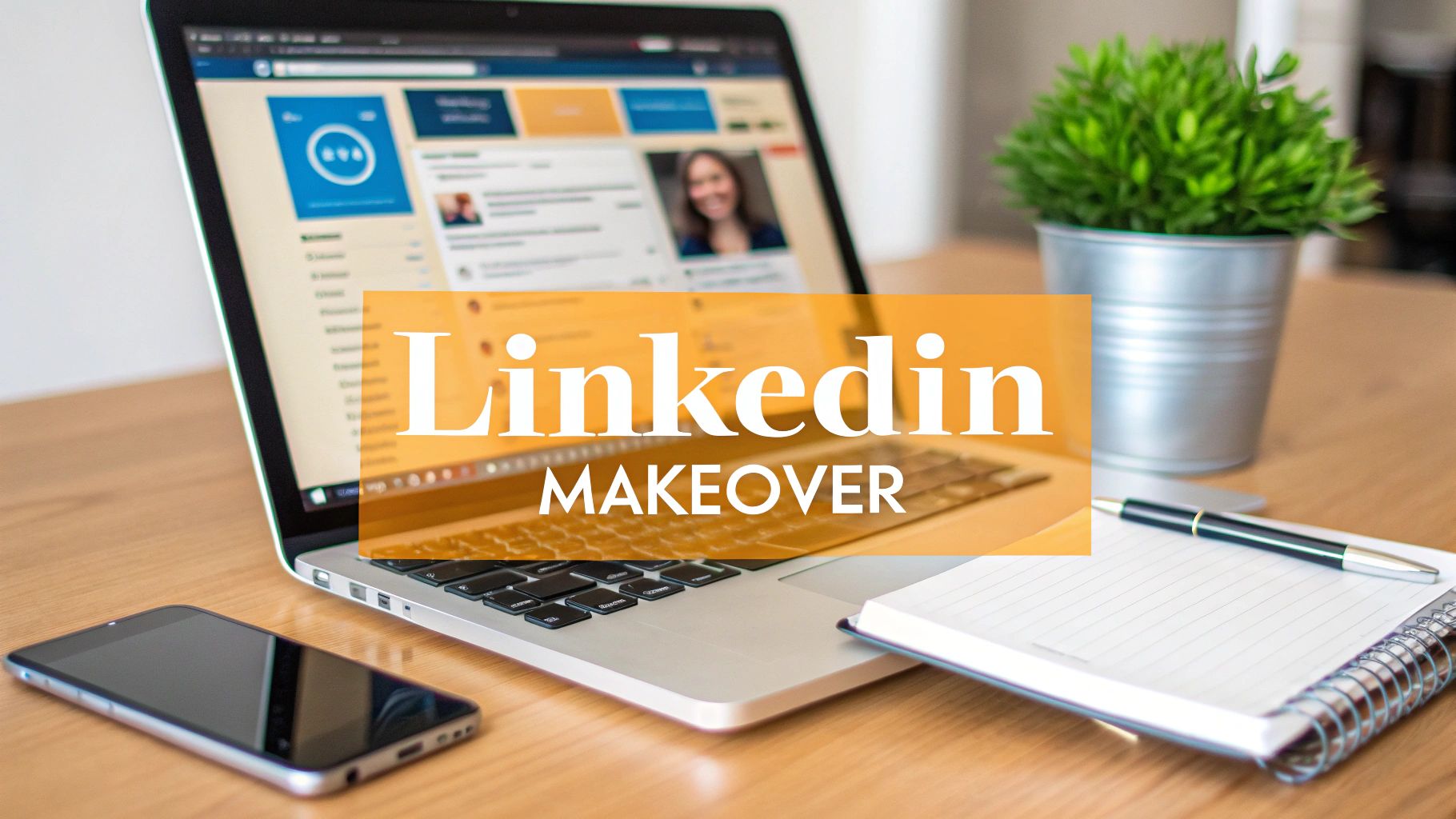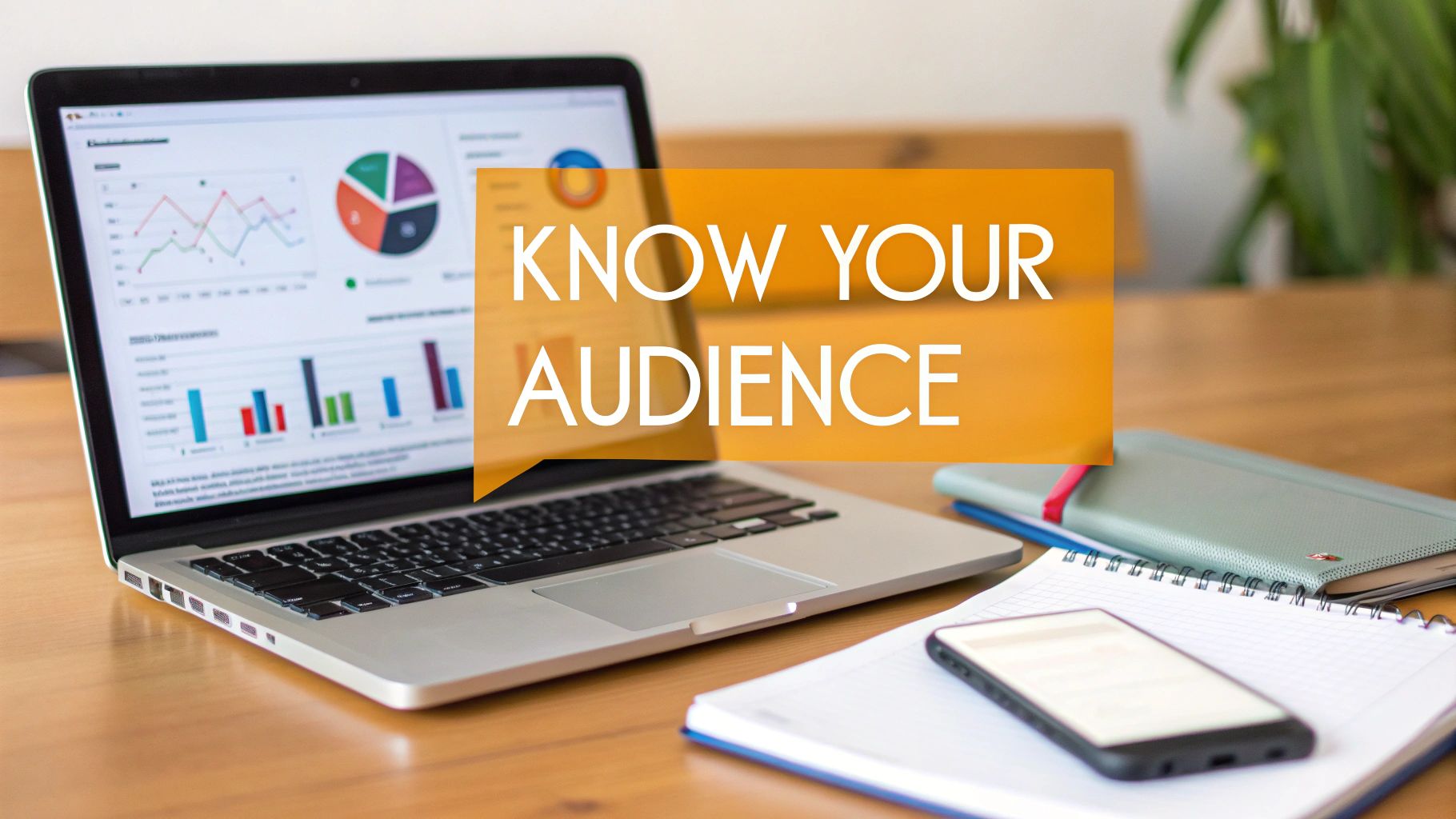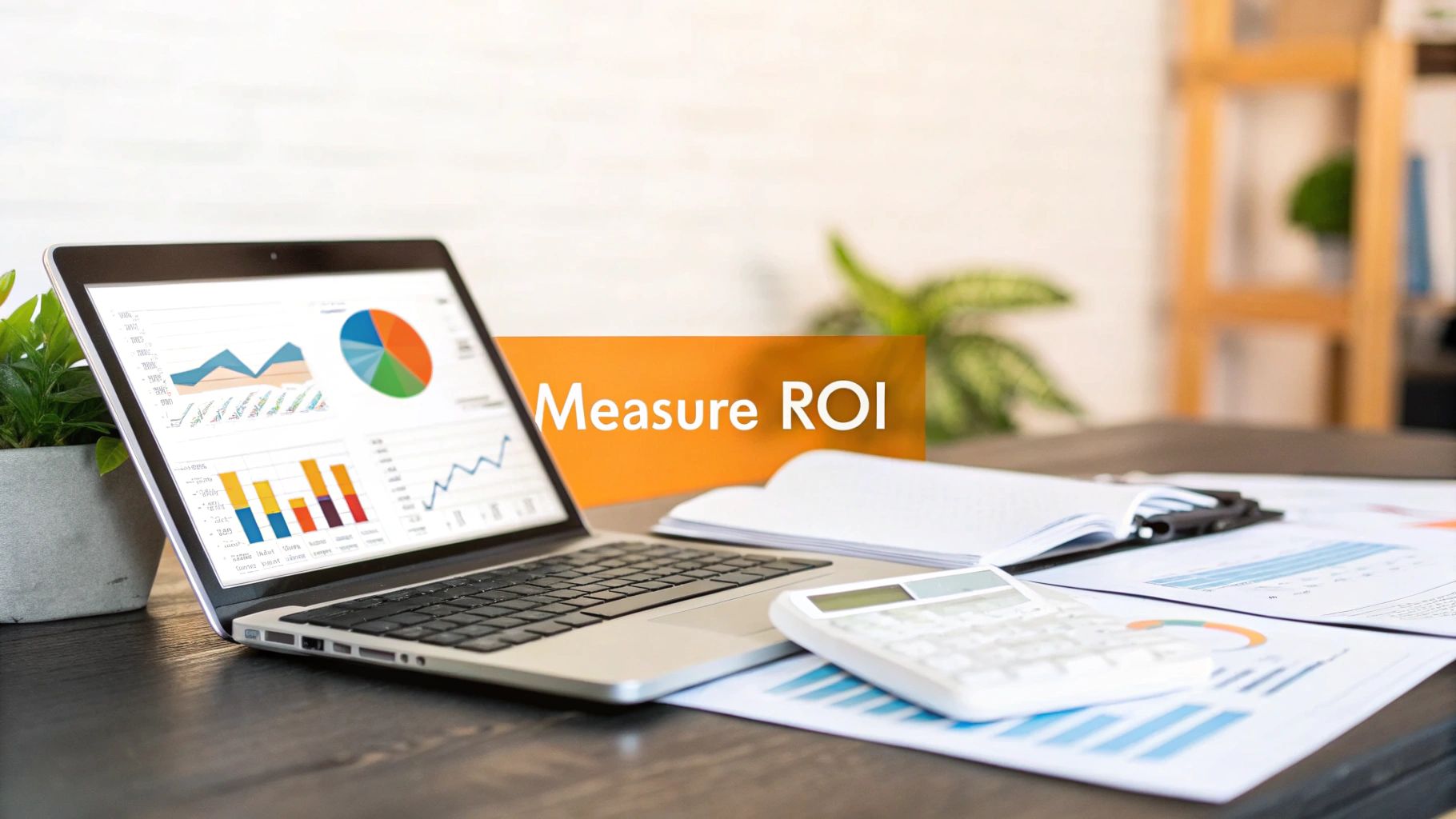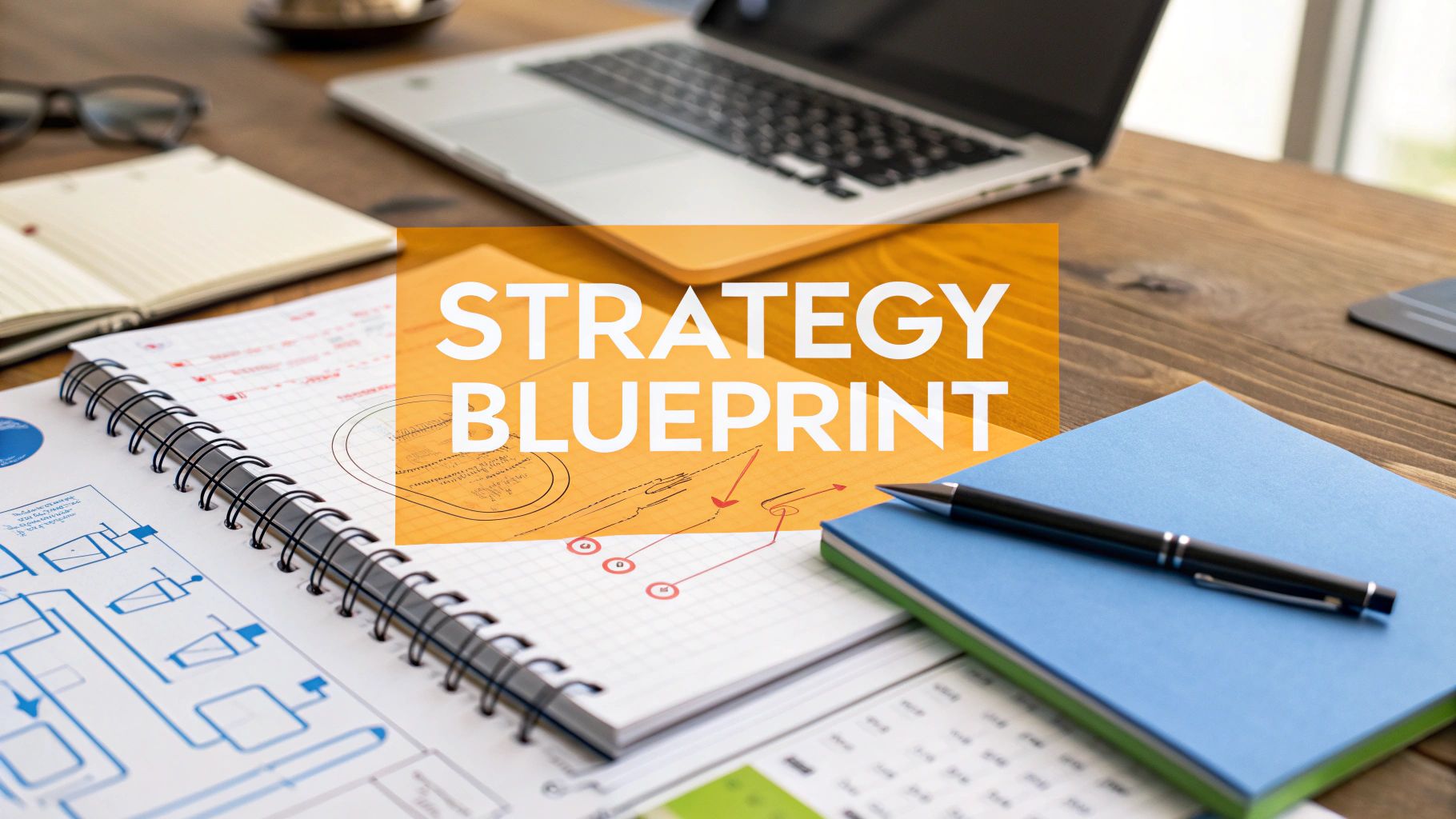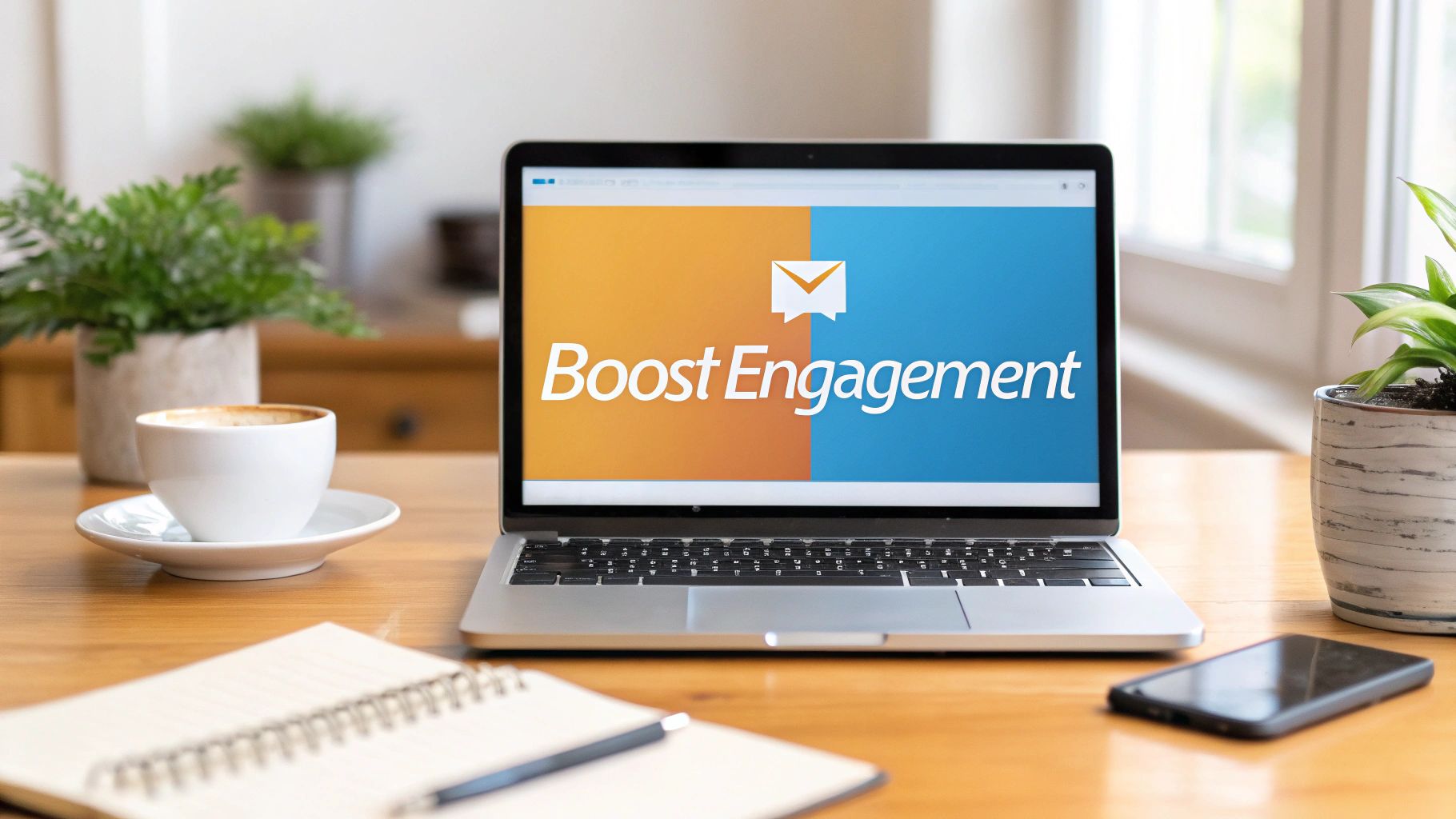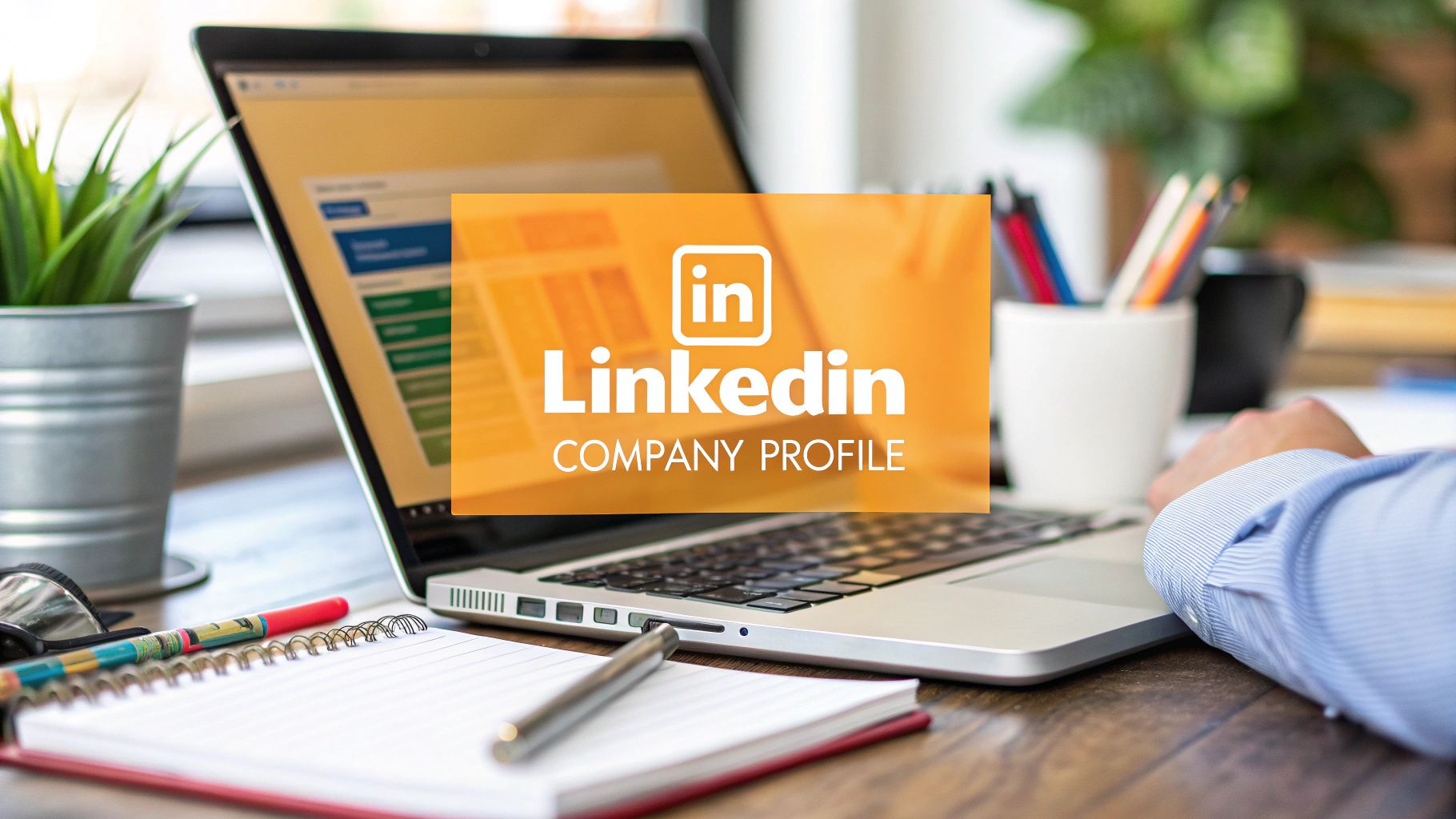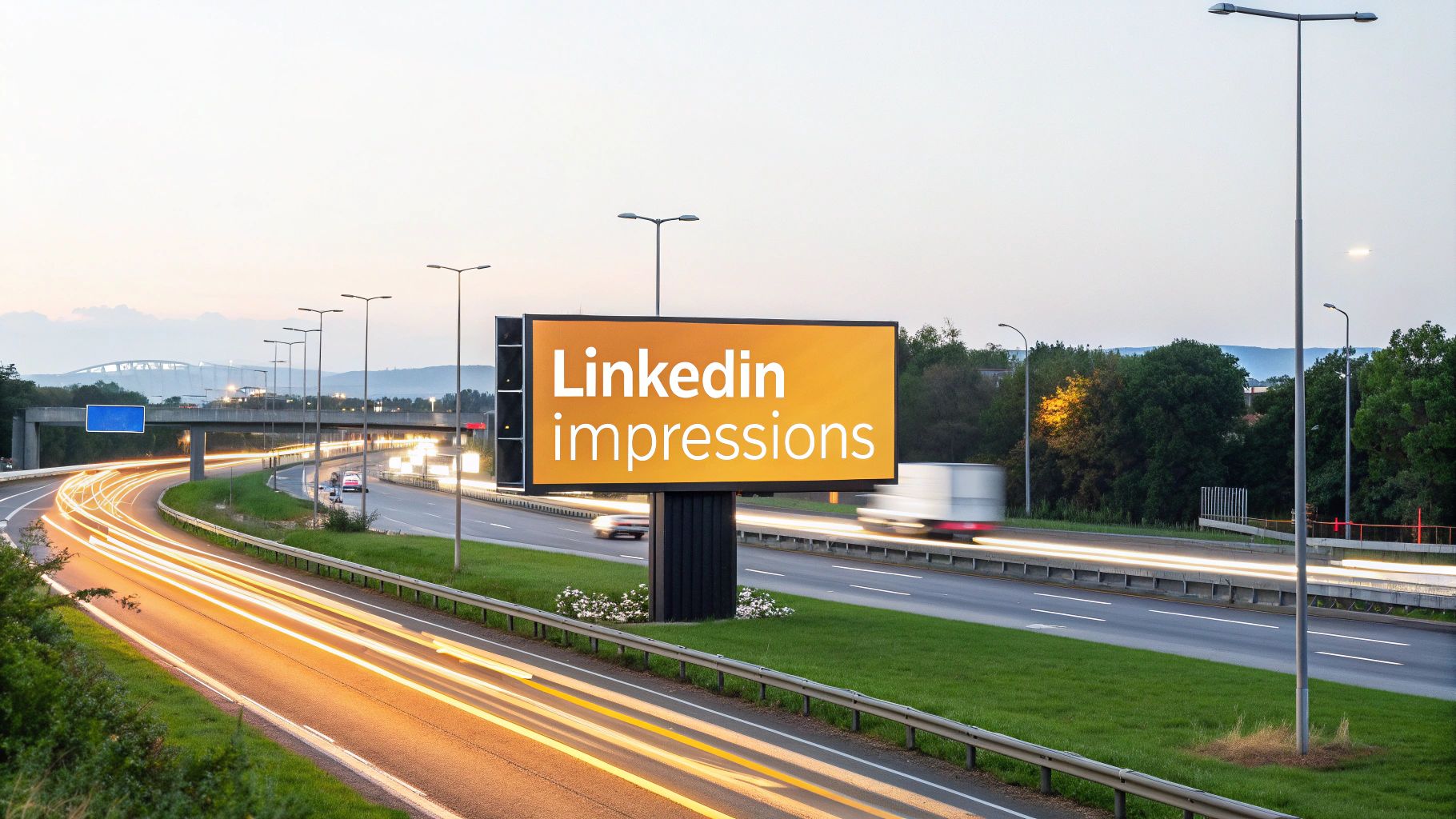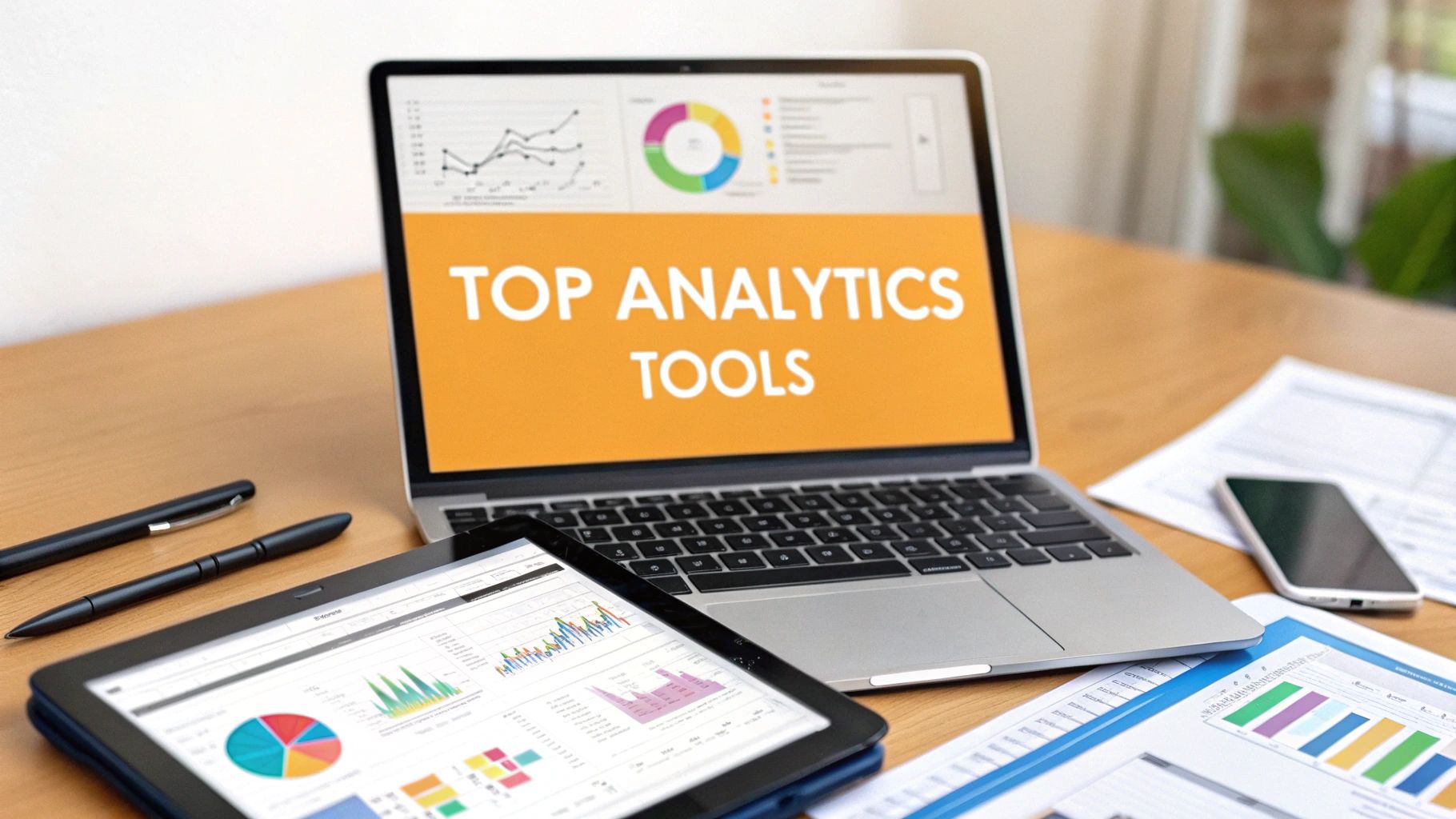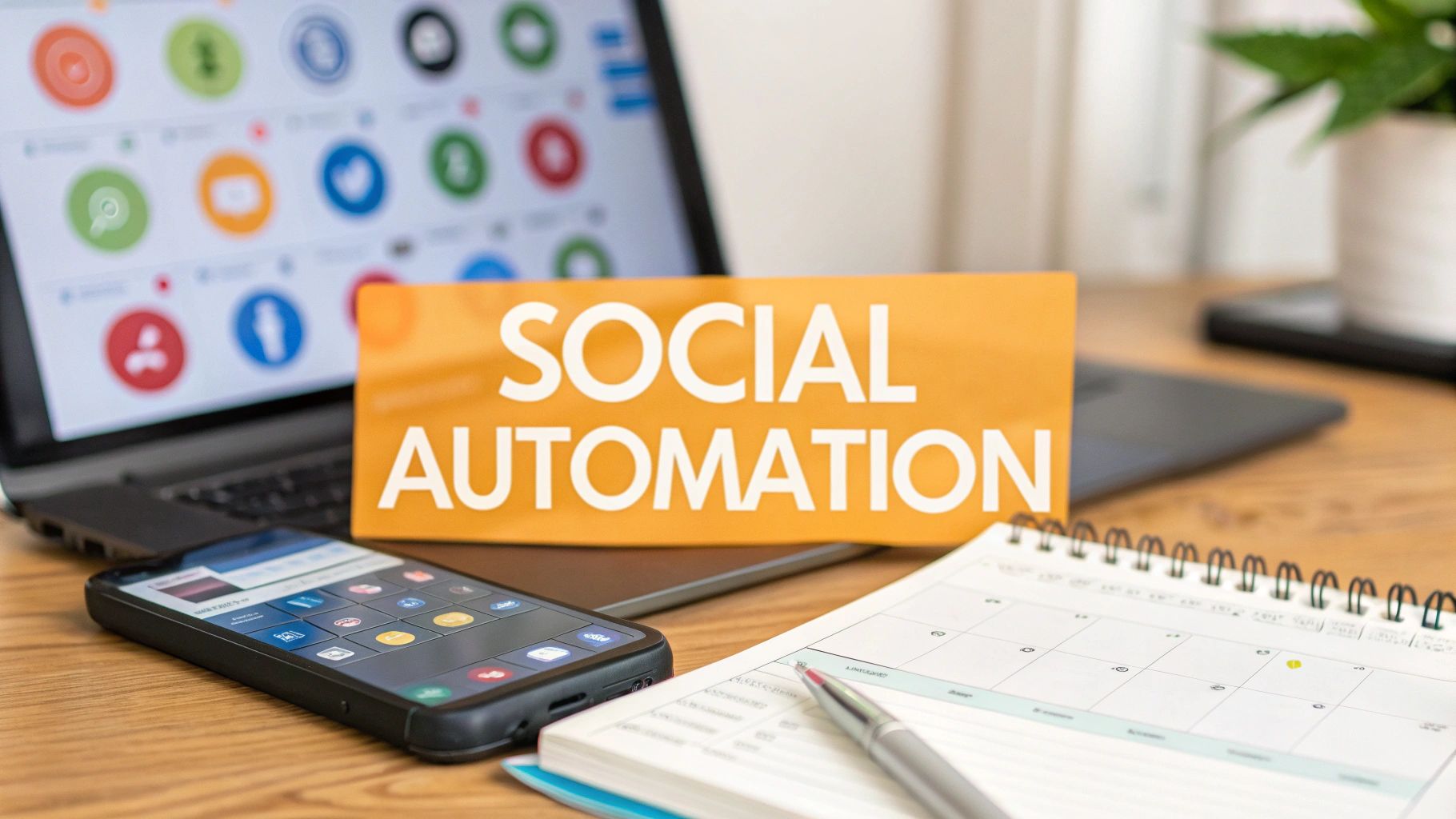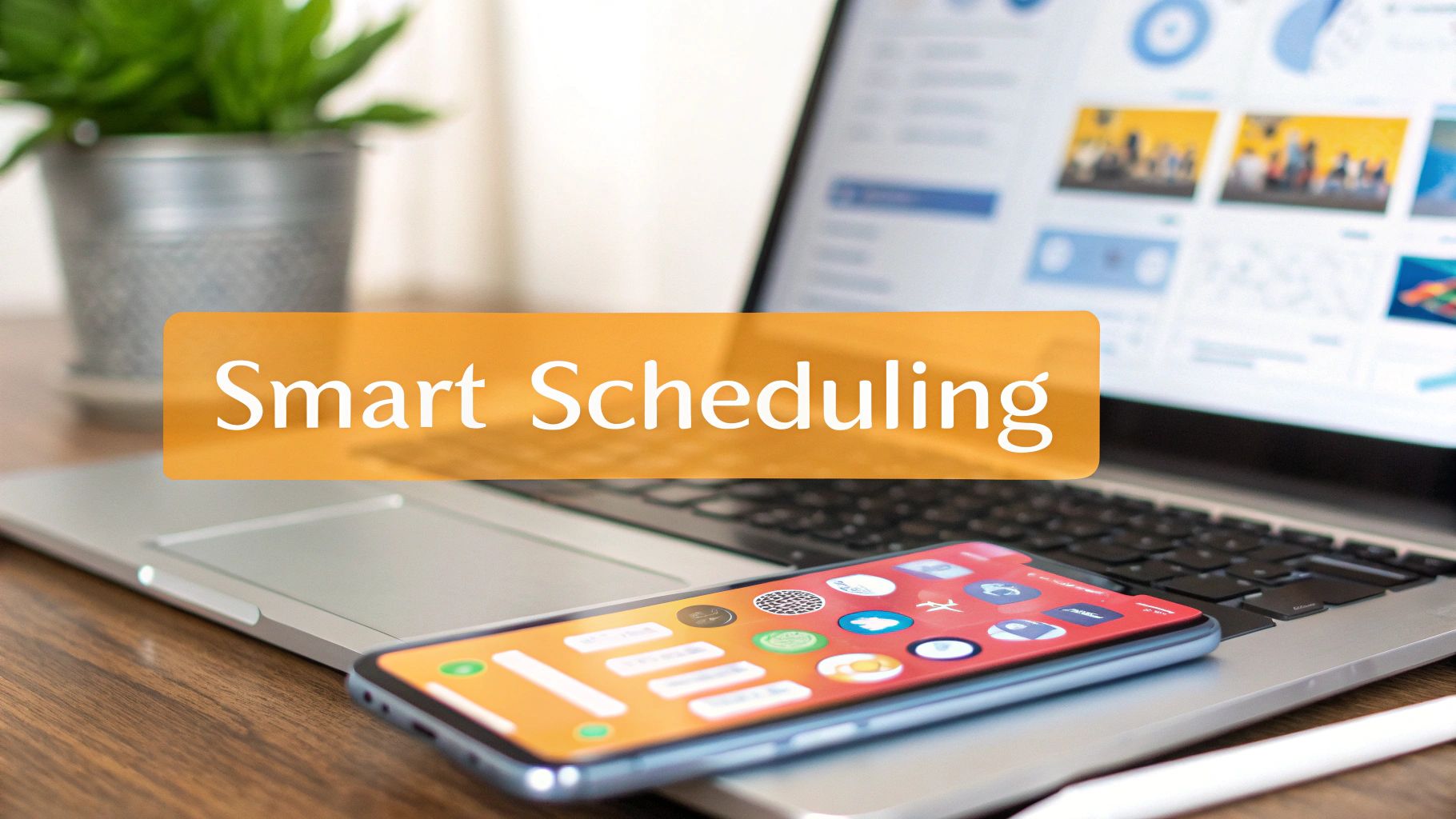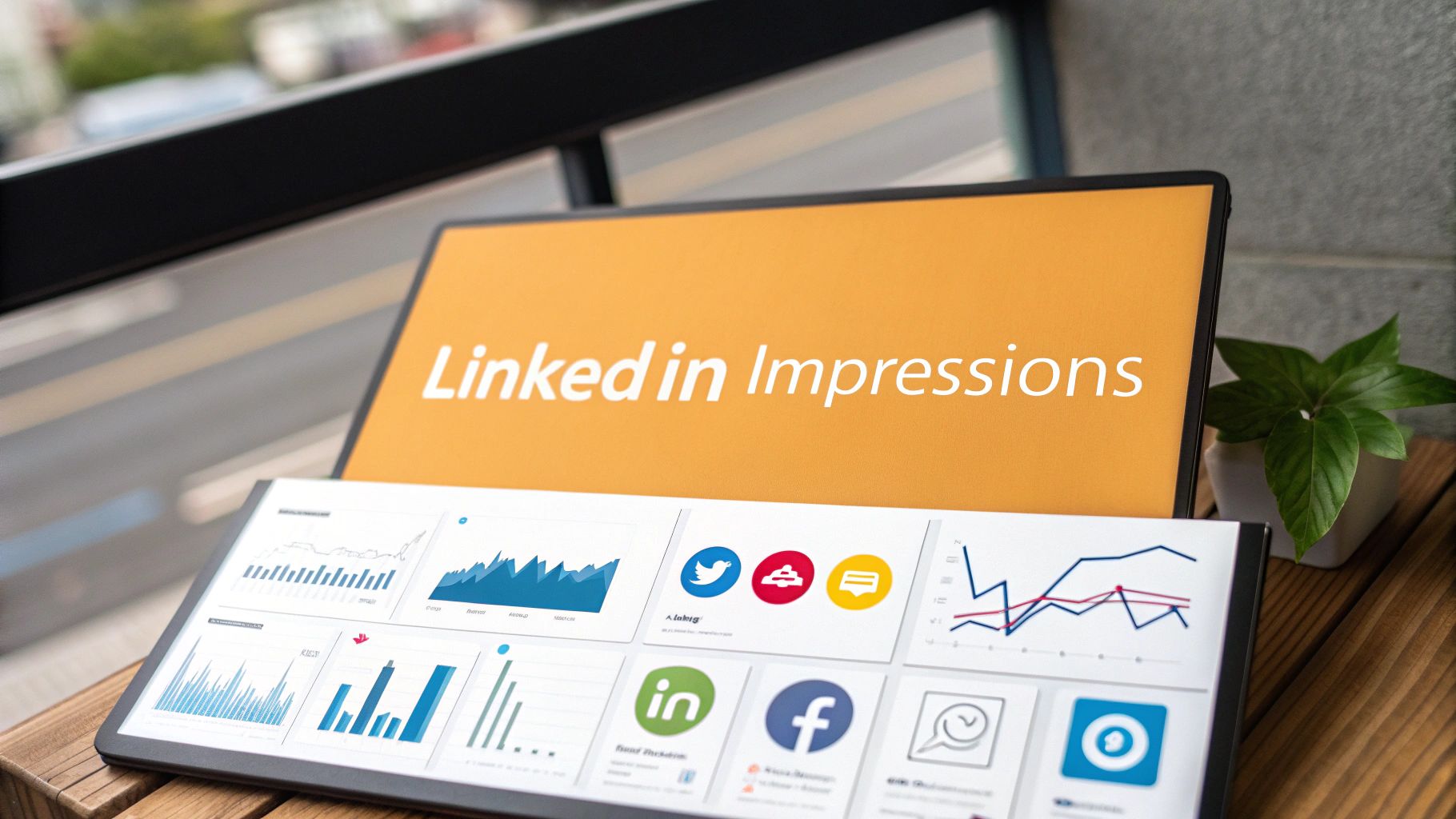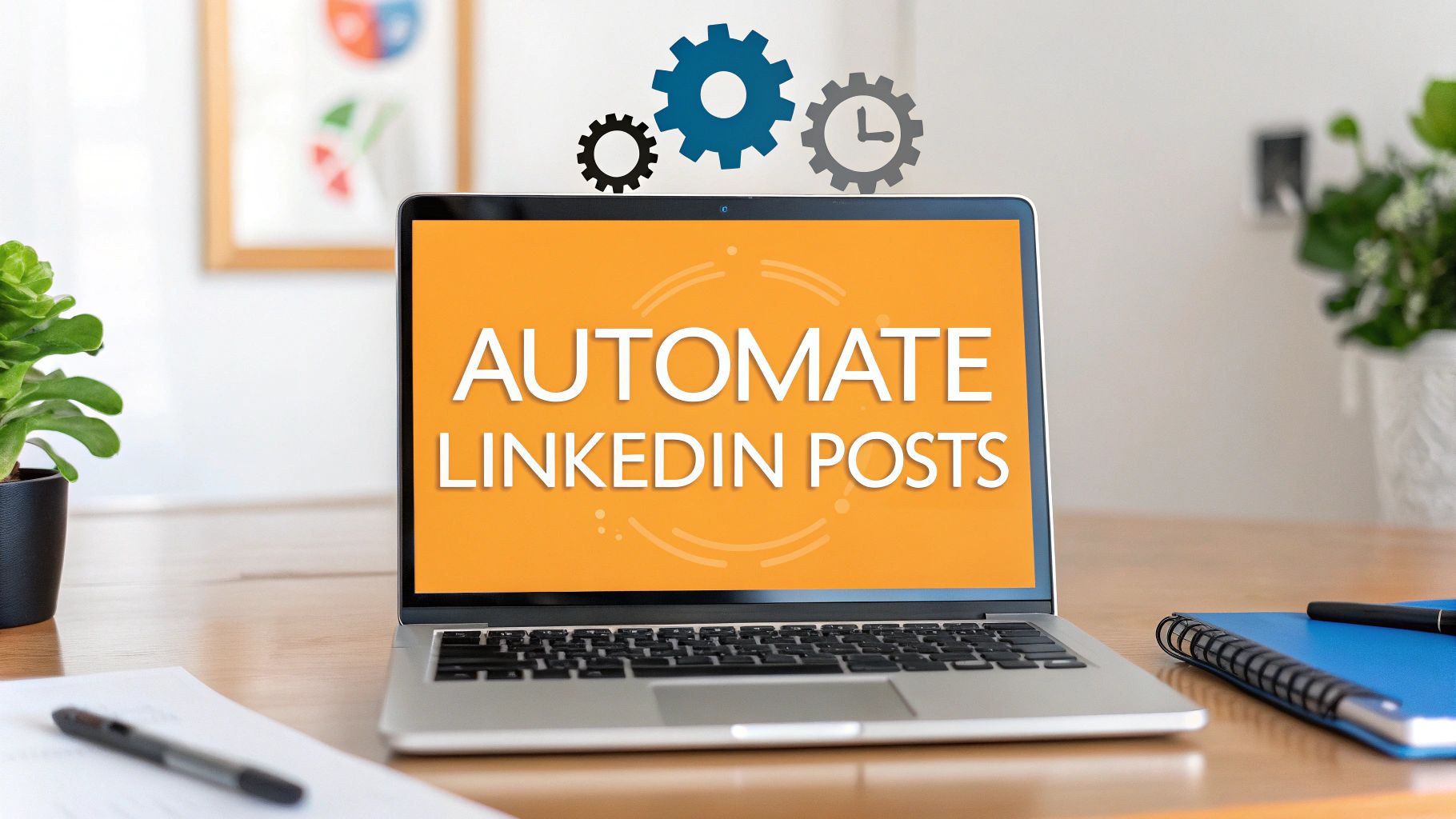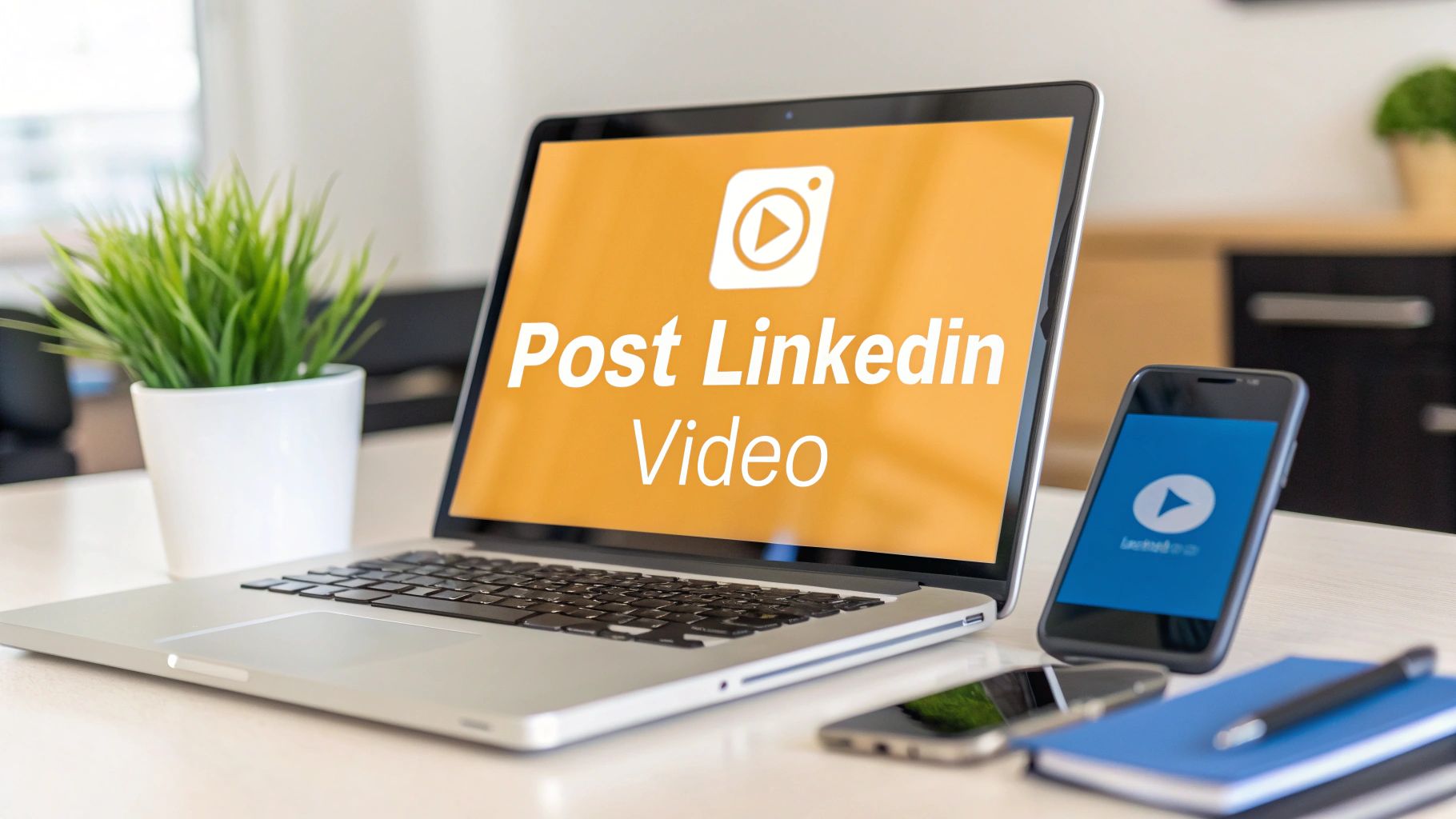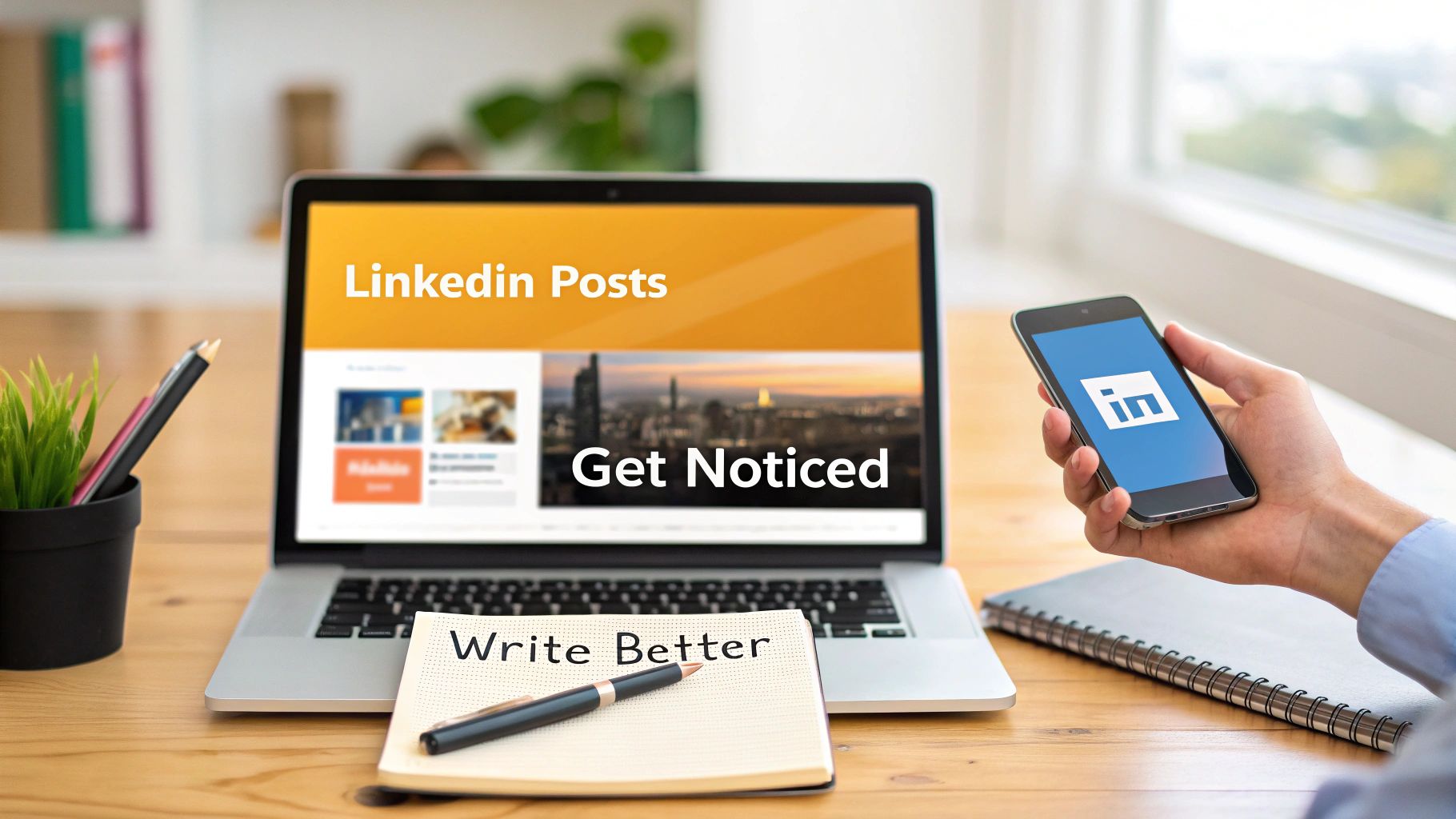So, how do you figure out who your target audience actually is? It all starts with digging into your current customer data, peeking at who your competitors are talking to, and getting crystal clear on the core problems your product or service really solves. Think of it as building a detailed sketch of the person who desperately needs what you're offering, using demographics, psychographics, and behaviors as your tools.
Why You Need to Stop Marketing to Everyone

Let’s get real for a second. Casting a wide net and hoping for the best is a surefire way to burn through your marketing budget with very little to show for it. It’s like shouting into a packed stadium and just hoping your one ideal customer hears you over the noise.
When you try to appeal to everyone, your message gets watered down. It becomes so generic that it doesn't resonate with anyone.
The true cost of this "spray and pray" approach is massive. We're talking about ad campaigns that completely miss the mark, content that lands with a thud, and products that never connect with the people who need them most. It's an exhausting and expensive cycle of low engagement and dismal ROI.
Shifting Your Perspective
The secret is a simple but powerful mindset shift. Stop asking, 'Who could possibly buy this?' and start asking, 'Who truly, deeply needs this?'
This one change completely reframes your entire strategy. Instead of chasing down every potential lead, you zero in on the specific group of people whose problems you are built to solve.
The goal isn't just to make a sale; it's to become the undeniable, go-to solution for a specific group of people. That kind of focus is what builds a loyal following and turns happy customers into your biggest cheerleaders.
When you nail this, every single piece of your marketing gets sharper and more effective. To get there, you first need to understand the core pillars of audience identification.
The Core Pillars of Audience Identification
Building a truly useful audience profile means looking at your potential customers from a few different angles. Each pillar gives you a unique perspective, helping you create a complete, three-dimensional picture instead of a flat caricature. These concepts are foundational to any solid content marketing strategy guide and keep your efforts on track.
To help you get a quick handle on this, here's a simple breakdown of the three pillars you need to know.
Audience Identification Pillars at a Glance
This table sums up the core components you'll use to build a detailed and effective audience profile.
| Pillar | What It Is | Why It Matters for Your Business |
|---|---|---|
| Demographics | The basic, factual data about your audience. Think age, gender, location, income, and job title. It's the "who." | This gives you a foundational sketch of your audience, helping you target ads and content to the right places and people. |
| Psychographics | The internal motivations and beliefs of your audience. This covers their values, attitudes, interests, and lifestyles. It's the "why." | This is where you connect on an emotional level. Understanding their motivations helps you craft a message that truly resonates. |
| Behaviors | The actions your audience takes. This includes their buying habits, brand loyalty, product usage, and online activity. It's the "how." | This helps you predict future actions. Knowing how they behave allows you to meet them at the right time with the right offer. |
Getting a firm grasp on these three pillars is your first real step toward creating a marketing plan that actually works. Before you can stop marketing to everyone, it's essential to understand how to market a new product effectively by identifying your audience and putting these principles into action.
Start by Looking at the Customers You Already Have
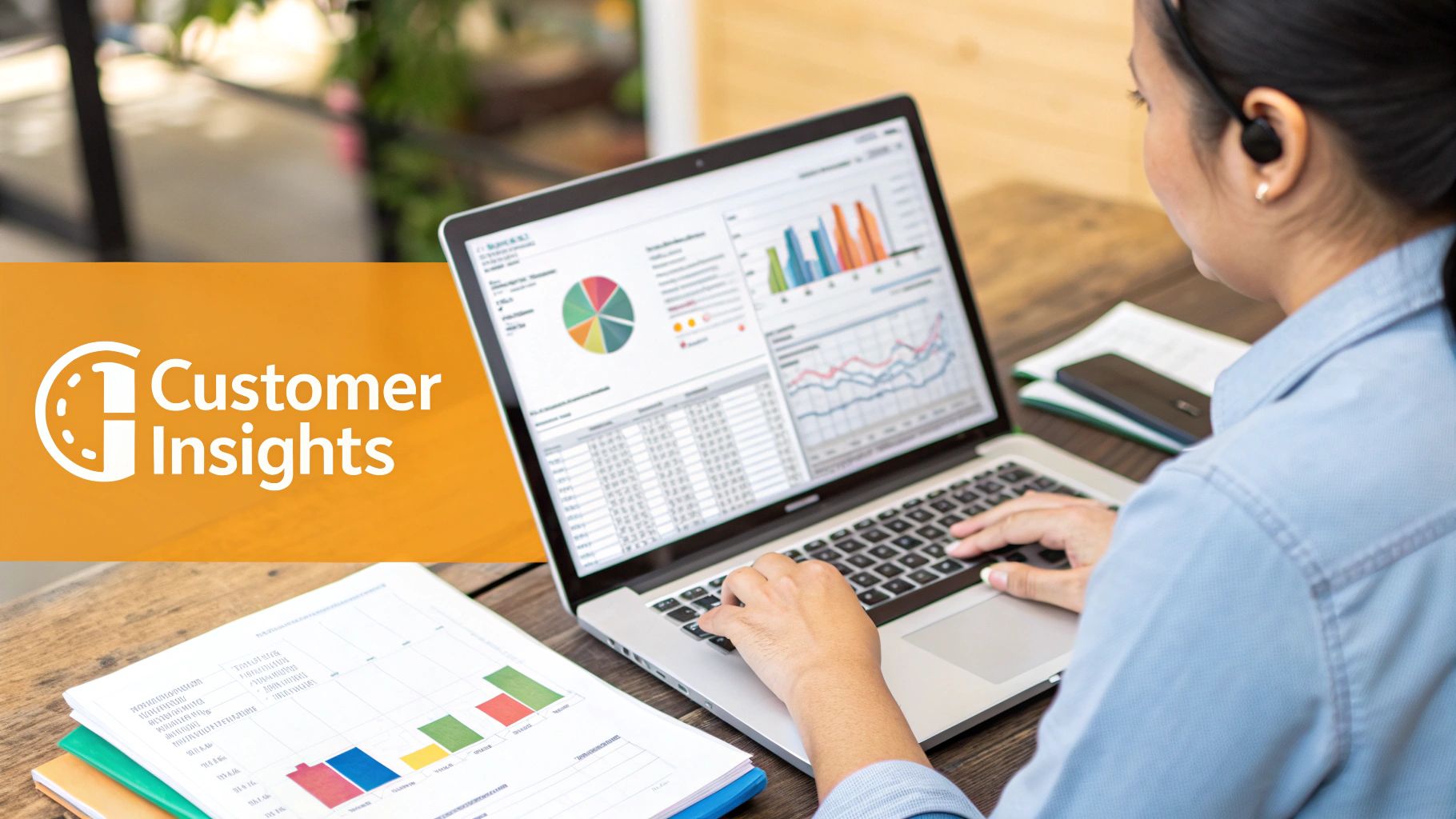
Before you go hunting for a new audience, take a good look at the treasure map you already own: your current customer list. It's a goldmine of real-world data, packed with clues about who truly gets value from what you do.
Forget the guesswork. It's time to put on your detective hat and analyze the people who have already voted with their wallets.
You don’t need a fancy, expensive CRM for this, either. Whether you’re working with sophisticated analytics or a simple spreadsheet of past orders, the mission is the same: find the patterns.
Dive Into Your Customer Data
Begin by pulling a list of your most valuable customers. I’m not just talking about the ones who made a single huge purchase. I mean the ones who are the most profitable over time—the repeat buyers, the loyal fans.
Now, look for the common threads that tie this top-tier group together. Are they all in a specific industry? Do they share a similar job title? What was the very first thing they bought from you? Identifying these shared traits gives you a powerful, data-backed foundation for your ideal customer profile.
Next up, their purchase history.
- Purchase Frequency: How often do your best customers come back?
- Average Order Value (AOV): Do your most loyal folks tend to spend more with each transaction?
- Product Path: Is there a common "gateway" product that new customers buy before they upgrade or purchase more?
The goal here is to reverse-engineer a profile of the customers who deliver the most long-term value. This shifts your focus from chasing any customer to attracting the right customer.
Go Straight to the Source for Feedback
Data tells you what happened, but conversations tell you why. Reaching out directly is one of the single most powerful things you can do to understand your audience’s real-world motivations and pain points.
One of the easiest ways to start is with short, focused surveys. Forget those 50-question marathons that nobody wants to fill out. Just a few well-phrased questions can uncover incredible insights.
Try asking things like:
- What was the main problem you were trying to solve when you found us?
- What’s the one feature you couldn't live without, and why is it so important?
- How has our product actually changed the way you work (or live)?
These open-ended questions get you genuine, detailed responses, not just a bunch of "yes" or "no" answers. If you have the time, even a quick 15-minute chat with a customer can provide rich, qualitative context that raw data will never give you.
Analyzing this feedback is also a fantastic starting point when you want to learn how to measure content performance, as you'll quickly see which topics and solutions truly resonate. This whole process—analyzing your data and talking to your people—gives you a solid, reality-tested launchpad for everything you do next. It ensures you’re building on a foundation of what’s already proven to work.
Analyzing Your Competitors and the Market
Your business isn't an island, and neither is your audience. One of the best shortcuts to figuring out your own target audience is to see who's already flocking to your competitors. This isn't about stealing their playbook; it's about finding the gaps they've left wide open.
Think of it as some light, ethical spying. By seeing who they attract, you can learn a ton about what messaging works, which groups are already paying attention, and—most importantly—where people's needs are still being ignored.
Uncovering Clues in Their Social Footprint
First stop: your competitors' social media channels. Don't just glance at the follower count. Dive deep into the real people who are actually engaging with what they post.
- Who are their superfans? Take a look at the profiles of people who comment and share all the time. What do they do for a living? What are their interests? How do they talk?
- What content pops off? Pay attention to the posts that get the most traction—whether they're helpful guides, funny memes, or straight-up promos. This is a direct line into what your shared audience genuinely cares about.
This gives you a real-world feel for the community they've built and helps you see the actual people behind the data points. That's a huge step toward building your own genuine connection.
The infographic below breaks down some of this competitor data, looking at follower demographics, customer sentiment, and market trends to help you pinpoint those opportunities.
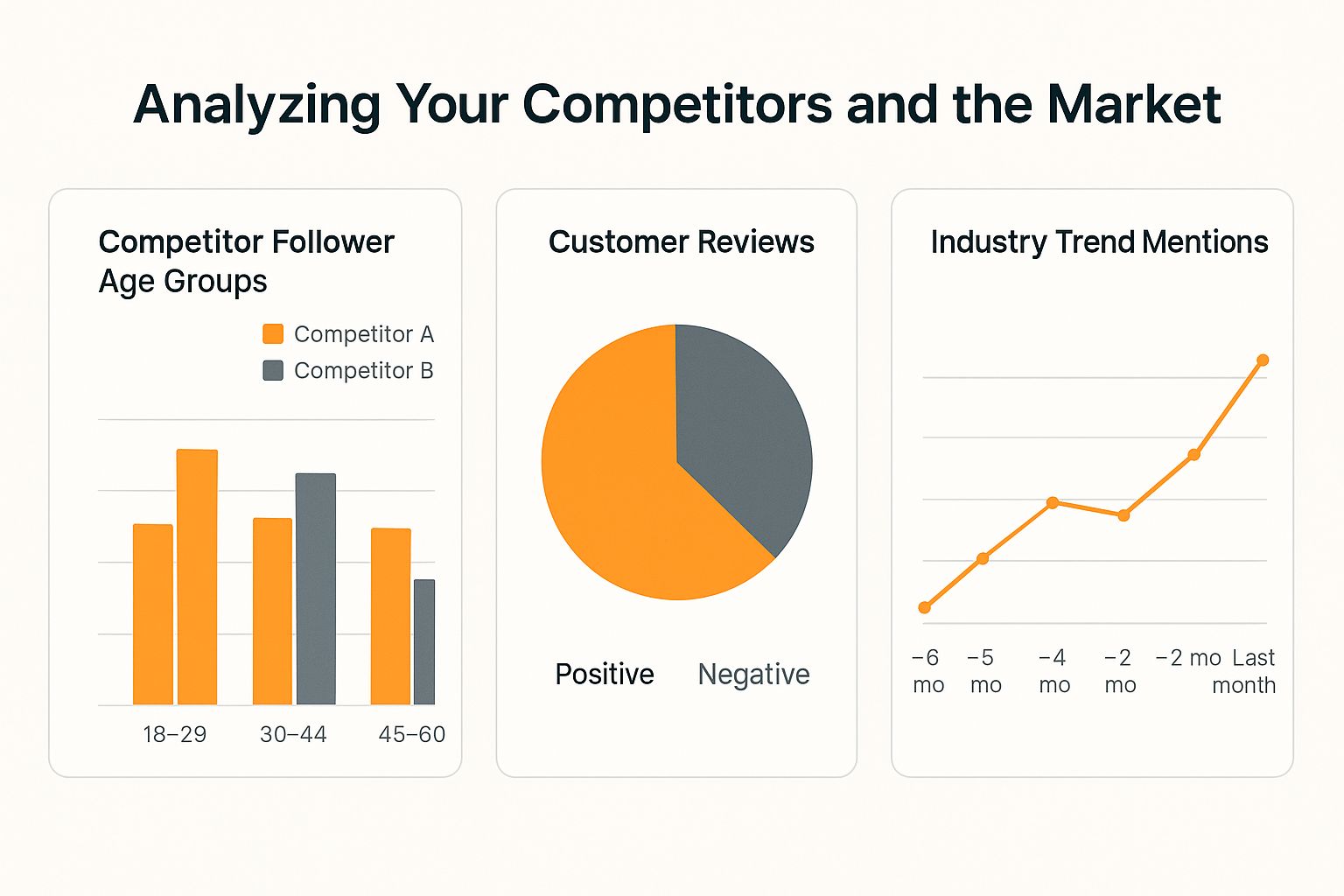
You can see how this competitor is laser-focused on a younger crowd but is getting so-so reviews. That could be a golden opportunity to swoop in and serve an older, neglected audience with a much better product or service.
Mining for Gold in Customer Reviews
Customer reviews are an absolute goldmine of raw, honest feedback. Head over to sites like G2, Capterra, or even just Google Reviews and start reading what people are really saying about your competition.
Zero in on the best and worst reviews. The five-star raves show you what they're knocking out of the park and what their customers truly value. But the one-star rants? That's where you find all the problems they haven't fixed.
Keep an eye out for patterns. If you see ten people complaining about the same missing feature, awful customer support, or confusing pricing, that's not just a gripe. That's a business opportunity practically gift-wrapped for you.
It also helps to keep the bigger picture in mind. As of early 2025, there are 5.56 billion internet users around the world, and 5.24 billion of them are on social media. Understanding the sheer scale and the subtle differences between markets is crucial. You can explore the full breakdown of the worldwide digital population to get a better handle on the numbers. This global context gives your competitive research a solid foundation based on the major trends shaping your industry.
Alright, let's figure out where your people actually live online.
You've done the hard work of figuring out who your audience is. But that's only half the battle. Now, you need to find out where they spend their time online. This isn't about just picking the most popular social media platform; it's about finding the digital corners where your message will actually land with people who want to hear it.
https://www.youtube.com/embed/SBTgak23COk
It's tempting to think your audience is everywhere, but that’s rarely the case. People have specific online habits. Are they scrolling through visual inspiration on Pinterest? Are they networking like crazy on LinkedIn? Or are they lost in some super-niche subreddit, debating the finer points of mechanical keyboards? Every platform has its own vibe and its own crowd.
Match Your Ideal Customer to the Right Platform
This is where your audience profile becomes your roadmap. You need to lay it right on top of the demographics of each platform to find the perfect fit.
Let’s say you’ve figured out your ideal customer is a B2B decision-maker in the SaaS world. Does it make sense to pour your energy into creating TikTok dances? Probably not. Your time is far better spent sharing insightful articles and joining conversations on LinkedIn. It’s all about being in the right place at the right time.
Take Facebook, for example. It's still an absolute giant, with 3.065 billion monthly active users as of 2025. But "everyone is on Facebook" isn't a strategy. Dig a little deeper, and you'll see its largest user group is the 25-34 age demographic, making up 31.1% of its audience. If that's your sweet spot, then you can't afford to ignore it.
My best advice? Go deep on one or two channels where you know your audience is highly active. Don't spread yourself thin trying to be everywhere at once. Really learn the culture of a platform, become a part of the community, and then think about expanding.
This is a fundamental part of any solid content distribution plan. You're not just throwing content into the void; you're strategically placing it where it can grow. For a more detailed breakdown on this, our guide on content distribution strategies is a great next step.
Platform Demographics Where Is Your Audience?
To make this a bit easier, I've put together a quick comparison of the top platforms. Think of this as a cheat sheet to help you find your audience's digital home base.
| Platform | Primary Age Group | Best For Targeting | Content Style |
|---|---|---|---|
| 25-34 | Broad interests, local communities, diverse demographics | Community-focused, video, news, ads | |
| 18-34 | Visual-first niches (fashion, food, travel), influencers | High-quality images, Reels, Stories | |
| 25-49 | B2B professionals, career-focused individuals, industries | Professional insights, articles, company news | |
| TikTok | 16-24 | Gen Z, trend-followers, entertainment seekers | Short-form, entertaining, authentic video |
| 30-49 (female-heavy) | DIY, home decor, recipes, wedding planning | Aspirational, visual discovery, how-to guides | |
| Twitter (X) | 30-49 | Real-time news, tech, politics, niche interests | Short updates, conversations, breaking news |
| 18-29 | Hyper-niche communities, hobbyists, enthusiasts | Authentic discussion, memes, text-based posts |
This table is a starting point. The real magic happens when you dive into the specific communities and conversations happening on these platforms.
So, Where Do They Really Hang Out?
Let's break it down with a few real-world scenarios to get you thinking:
- LinkedIn & Twitter (X): This is your playground for reaching professionals. Think industry news, career advice, and deep dives into B2B topics. It's where business gets done.
- Instagram & Pinterest: If your brand is highly visual, this is your home. Perfect for anything from fashion and home decor to food and travel. It’s all about aesthetics and inspiration.
- YouTube & TikTok: Video is king here. This is the spot for educational how-to's, entertaining clips, and content that shows off your brand's personality.
- Reddit & Niche Forums: Don't sleep on these! This is where you connect with die-hard hobbyists and super-passionate communities that are often completely ignored by bigger brands.
Once you’ve zeroed in on the right platforms, the next step is figuring out how to grab their attention and turn followers into customers. For some great pointers on that, check out these tips on social media lead generation. Knowing the "where" is what turns a good strategy into a great one.
Bringing Your Ideal Customer to Life

Okay, you've done the hard work of gathering all that data. Now for the fun part: turning those numbers and spreadsheets into something you can actually use. We're going to build a customer persona, which is essentially a detailed, semi-fictional character who embodies your perfect buyer.
Don't think of this as just another marketing document. This persona is your new best friend. They'll be the person you have in mind for every marketing campaign, every product tweak, and every blog post you write. They become your North Star.
Beyond Demographics to True Understanding
To make this person feel real, we have to push past the basics like age and job title. We need to dig into their psychographics—the stuff that really makes them tick. This is where you move from knowing who your audience is to understanding why they do what they do.
What problems are they stewing over at 3 AM? What are their biggest career goals? What little frustrations bug them every single day?
An effective persona isn’t just a list of traits; it’s a story. It captures the goals, challenges, and motivations of a key segment of your audience, making it easy for your team to step into their shoes.
This is how you create messaging that genuinely connects. You stop talking about your product's features and start talking about their life's problems.
Building Your Persona: A Practical Example
Let’s walk through this. Imagine you run a SaaS company that sells project management software. You've done your research, and now you're ready to create a persona. Let's call her 'Marketing Manager Mary.'
Here’s how you might start to bring Mary to life:
- Demographics: Mary is 34, lives in a big city, and leads a team of five at a growing tech company.
- Goals: She’s driven. She wants to show her team's ROI to the execs and snag a promotion in the next two years.
- Challenges: Chaos. She’s drowning in campaigns, her team is struggling to stay aligned, and deadlines are constantly at risk. Key tasks are falling through the cracks, and it’s stressing her out.
- Values: She appreciates efficiency, straightforward communication, and tools that her team can pick up and use without a month of training.
- Fears: Her biggest fear? A high-stakes campaign imploding because of disorganization, making her look like a bad leader.
See what happened there? 'Marketing Manager Mary' is no longer a collection of data points. She’s a person with real-world problems that your software is perfectly positioned to solve. Now you know exactly how to write your website copy, ads, and emails to speak directly to her.
Think about where Mary spends her time online. If she's on the younger side of the professional spectrum, you can't ignore platforms like TikTok. By 2025, it's expected to have a staggering 955.3 million users worldwide. And people aren't just scrolling—they're buying. In 2024, 43.8% of its U.S. users made a purchase through the app.
For a business trying to reach people like Mary, this is a direct line of communication. You can discover more insights about social media statistics to see how these trends fit your own personas, but the lesson is clear: you have to meet your audience where they already are.
Your Target Audience Questions Answered
As you start digging into who you’re really talking to, a few questions always seem to come up. It's totally normal. Getting these details right is what separates a decent strategy from a truly effective one. Let's clear up some of the most common hangups.
Target Audience vs. Customer Persona
Okay, what's the actual difference here? It’s a classic for a reason, and knowing the distinction makes a world of difference in your marketing.
Think of your target audience as the wide shot. It’s the broad group of people you want to reach, defined by demographics and shared interests. Something like, "millennial women in big cities who are into sustainable fashion." This is the ‘who’ you’re trying to sell to.
A customer persona, on the other hand, is the close-up. It’s a detailed, semi-fictional character that lives inside that broader audience. We give this person a name, a job, maybe even a backstory. You might dream up "Eco-Conscious Chloe," a 28-year-old graphic designer who’s frustrated trying to find clothes that are stylish, affordable, and ethically made.
Your target audience is the entire crowd you want at your concert. Your personas are the specific superfans in the front row whose names and stories you actually know. The persona puts a human face on the data.
How Many Audiences Should I Have?
It's tempting to cast a wide net, right? But how many groups can you realistically focus on without spreading yourself too thin? The answer, especially if you're just starting out, is to be ruthless with your focus.
Zero in on one primary target audience first. Seriously, just one. This lets you get your messaging dialed in, perfect your value prop, and really nail that product-market fit. Trying to be everything to everyone is a classic recipe for becoming nothing to anyone.
Once you’ve got a real foothold and understand that core group inside and out, then you can think about expanding. A fitness app, for instance, might start by targeting "busy professionals aged 30-45 who need quick at-home workouts." After they’ve built a loyal following there, they could branch out to a secondary audience, like "stay-at-home parents looking for exercise routines they can do with their kids."
How Often Should I Revisit My Audience Profiles?
This is the one people often forget. Creating audience profiles isn't a "set it and forget it" task. Markets shift, customer needs change, and your business evolves. Your understanding of your audience needs to keep up.
A good baseline is to do a major deep-dive and review of your audience profiles and personas at least once a year. But don't wait that long to check in. I recommend quick, quarterly reviews to catch any subtle changes before they become major problems.
And certain events should be an automatic trigger for a refresh:
- You’re launching a new product or service.
- You’re expanding into a new city or country.
- You see a sudden, noticeable drop in engagement or sales.
- There's a big shakeup in your industry (think new tech, new regulations, etc.).
Basically, if you're always listening to customer feedback and keeping an eye on your analytics, you’ll know when it's time for a tune-up. This is what keeps your marketing sharp and prevents it from feeling stale.
Ready to stop guessing and start creating LinkedIn content that truly connects with your ideal audience? RedactAI analyzes your unique expertise to generate posts that resonate with your network, helping you build a powerful personal brand in minutes. Start your free trial today and see the difference.

